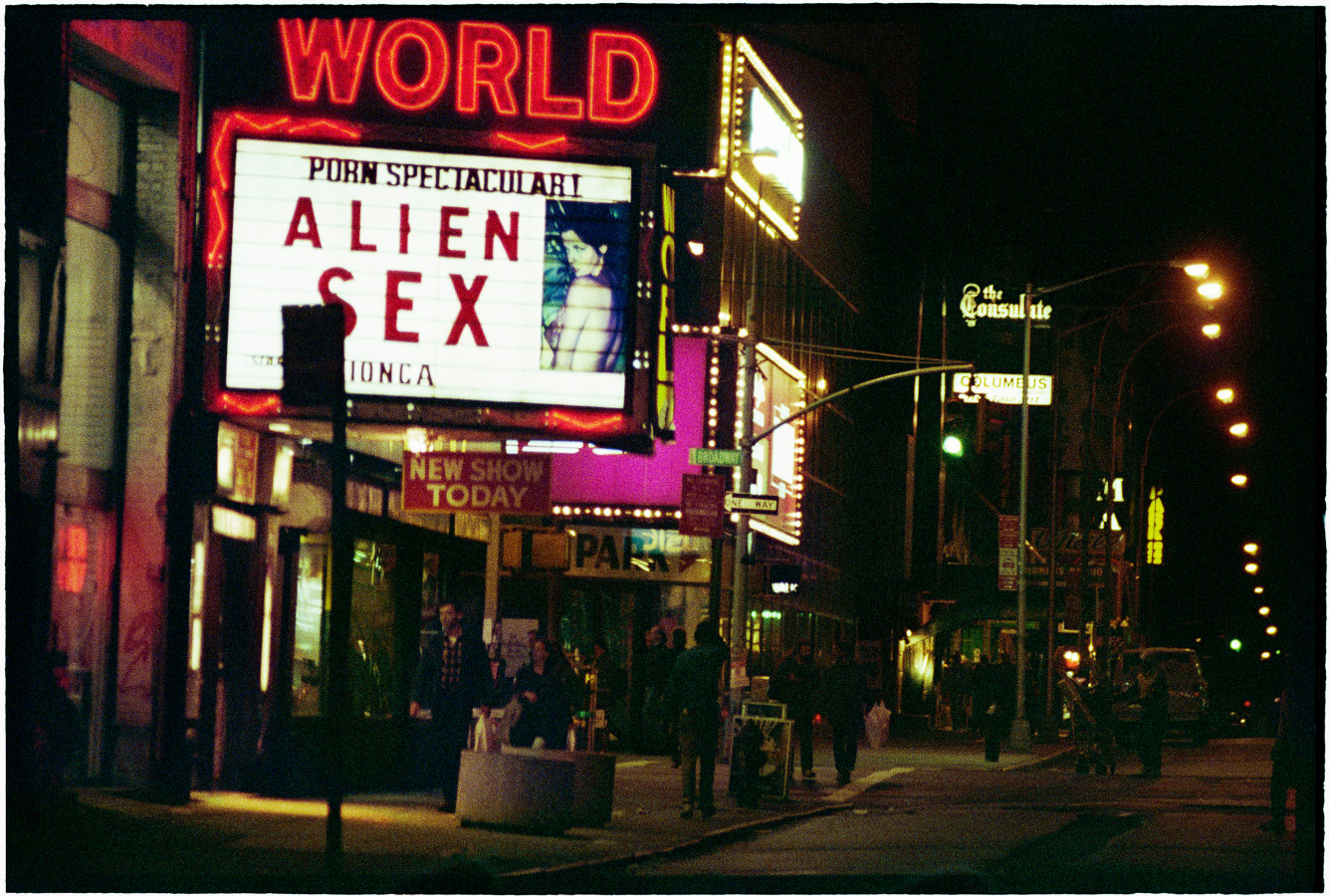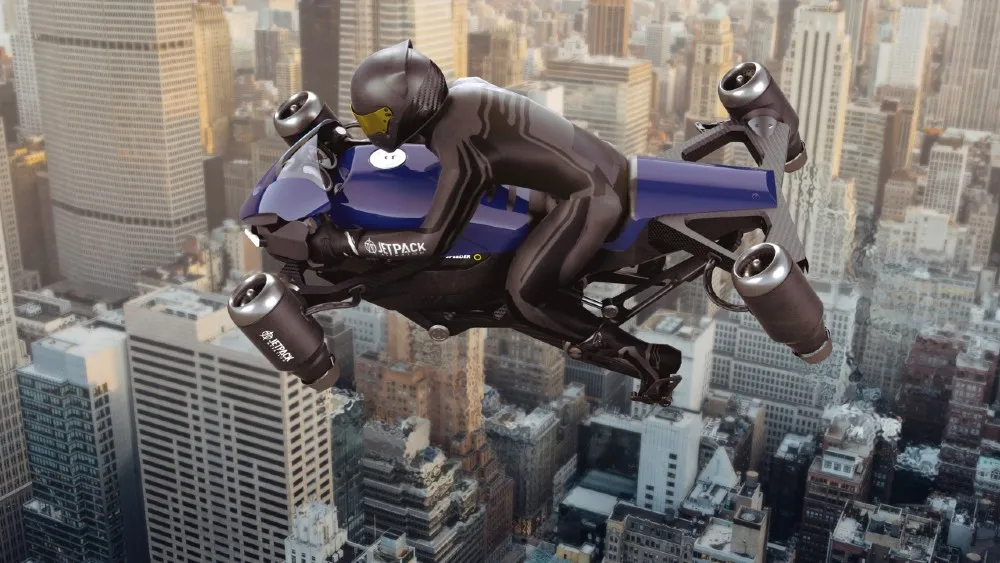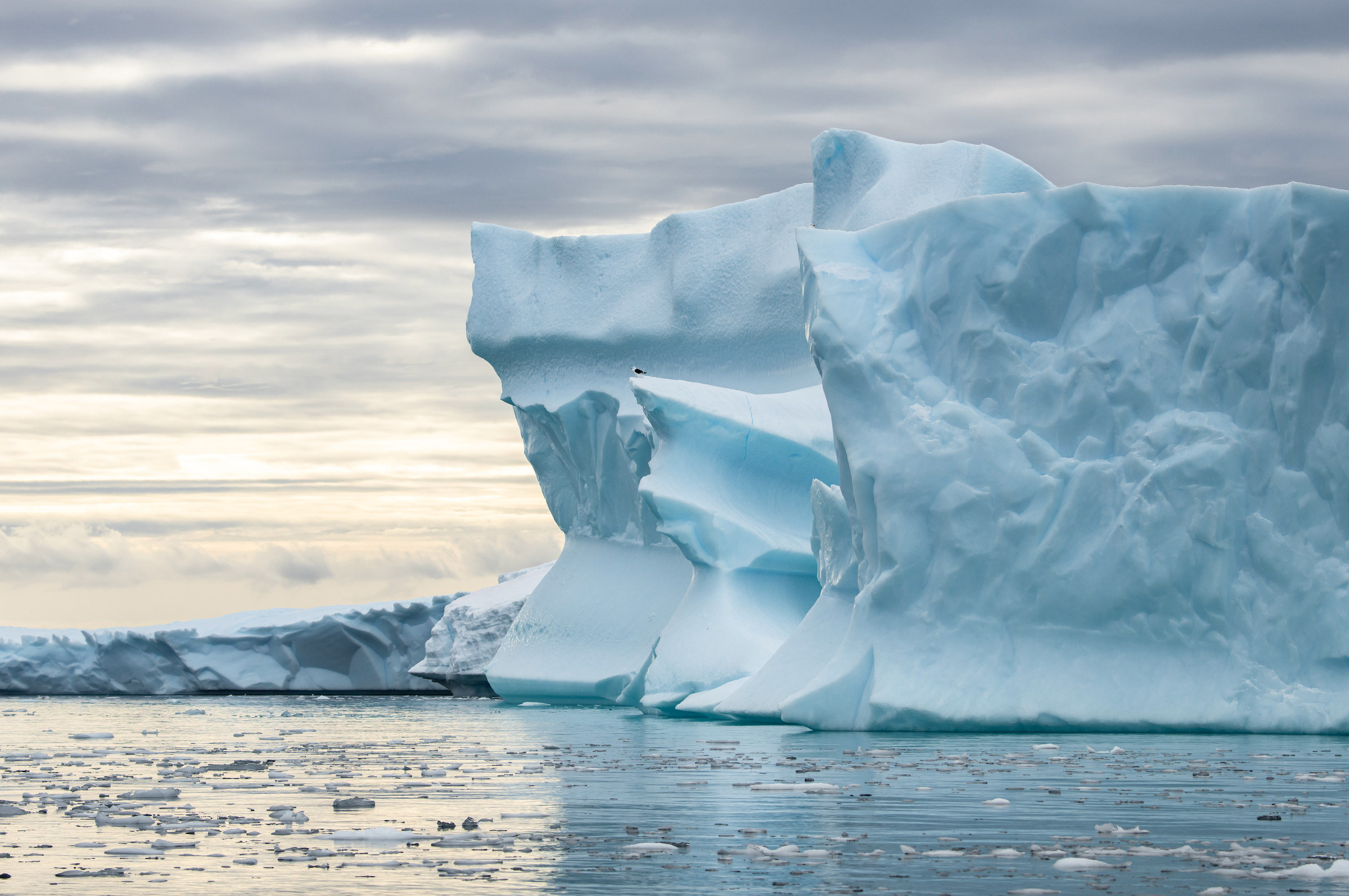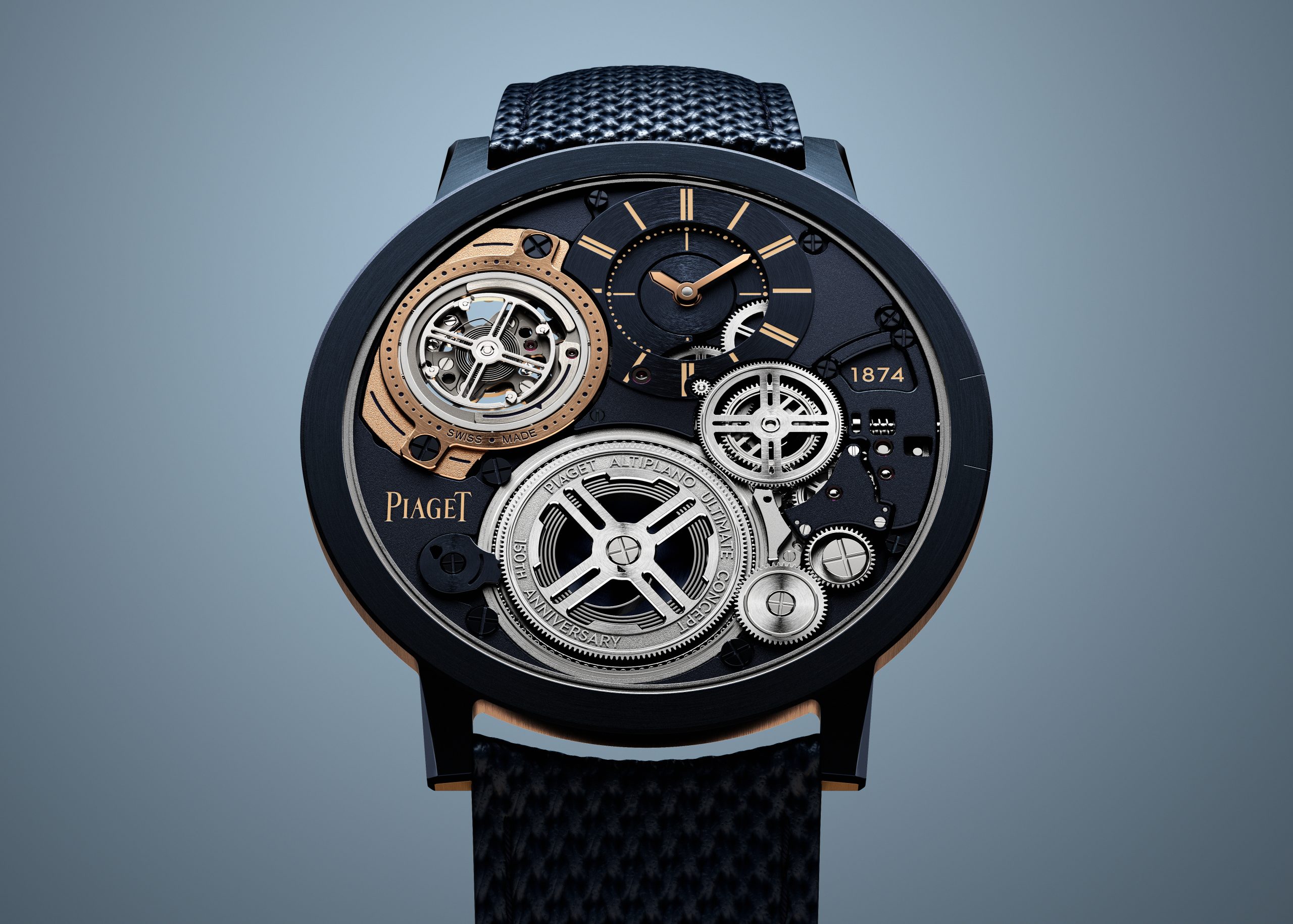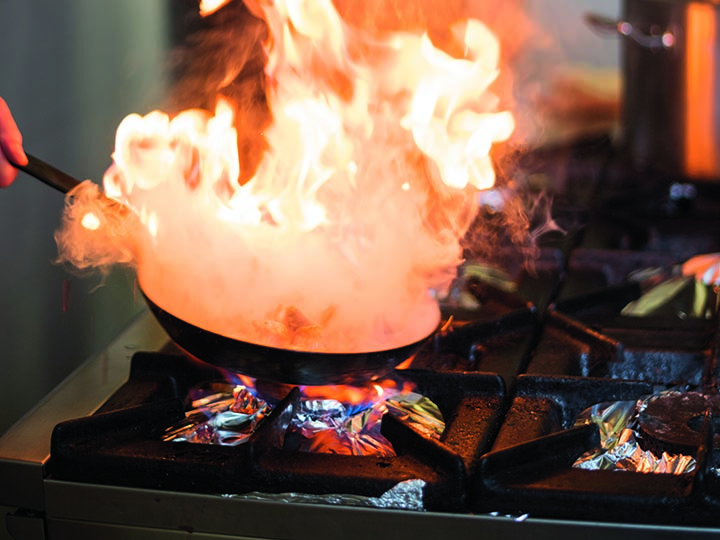
Turning tables: top chefs anoint the hottest new culinary stars
Who will be the stars of the future? Our Culinary Masters series reveals the ones to watch, as chosen by the chefs in the know.
They’re the rock stars of today’s food-mad world, with a string of greatest hits to their names. Mention ‘Neil’, ‘Pete’ or ‘Christine’ and most serious gourmands will know exactly which kitchen gods you’re talking about.
But who will be the first-name-only stars of the future? In an Australian-first iteration of Robb Report US’s annual Culinary Masters celebration, we reveal the ones to watch, as chosen by those who would know – Neil Perry, Peter Gilmore, Christine Manfield, Andrew McConnell, Philip Johnson and Duncan Welgemoed.
—
- Want to join the stars of the present and the stars of the future for dinner as part of our exclusive Culinary Masters series during October? Seats are strictly limited for seatings in Melbourne, Hobart, Adelaide, Brisbane and Sydney. Click here to book and for more information.
—
Neil Perry
Chef, restaurateur and now chief brand and culinary officer with Rockpool Dining Group

Neil Perry has been in the business since the ’80s. He can pick great talent when he sees it, with alumni including Kylie Kwong, Mike McEnearney (Kitchen by Mike, No. 1 Bent Street), Mat Lindsay at Sydney fave Ester, and more.
“We have a responsibility to turn people into great cooks,” says Perry. “We need to help grow them in their career and as people.”
So who does Perry pick as one to watch? He nominates 32-year-old Analiese Gregory, co-owner of a slip of a Darlinghurst wine bar in Sydney called Bar Brose (where her chicken in vin jaunewith foie gras butter is the stuff of dreams), but now also head chef at Hobart’s most acclaimed restaurant, Franklin.
“Her food is delicious, unique and quirky,” says Perry. “She has also worked with a lot of people with their heads screwed on. And she has great opportunities and a great career ahead of her. There’s no substitute for putting focus and energy into something if you want to succeed. And Analiese is doing just that.”
Analiese Gregory
Co-owner, Bar Brose, SydneyHead chef, Franklin, Hobart

“I went to an all-girls school [in New Zealand] and the only way I was allowed to leave, at 16, was to do a two-year diploma in professional cookery. I was in my delinquent teenage phase. Restaurant kitchens were like a family and you were allowed to smoke and drink and stay up late. I just loved it.”
And so began Analiese Gregory’s cooking career. (Her father, it must be said, is also a chef.) That was a whole 16 years ago. Since then she has worked with and for some of the world’s best – from the stellar Logan Brown in Wellington to the (now defunct) two-Michelin-starred The Capital in London, Quay in Sydney, then a stint in France with the much-revered Michel Bras (an icon for most contemporary chefs) and the equally acclaimed Mugaritz in Spain’s Basque Country.
Lessons along the way were many: “Logan Brown really cared about produce. But going to London really caned me every day and taught me how to cook. It was the first place I was told, ‘No, this isn’t okay. And you are doing it again, right now.’
“Quay with Pete [Gilmore] was definitely one of the first places that I worked where there was an emphasis on gardens, growing and vegetables. Always searching for new and different things. It was also where I learned to run a kitchen, basically.”
Gilmore has been a great mentor. But Gregory’s time in France added a whole new dimension and perspective. Chef Michel Bras is known for his almost Zen-like approach to ingredients. But the Zen extends to every aspect of working life. “He taught me about the way to live and work. To create a little mental space to go to. He would send us once a week into the woods to go foraging. Or to make wine. Or go hiking. I learned a lot about life there.”
Now on the brink of a new chapter, Gregory is still pondering her direction for Franklin, a wide-open, modern space with a huge wood-fired oven and wonderful use of sometimes unusual produce. “I will drive around, go to suppliers, and kind of base it off that. I’m also super-excited about the oven. And going out to collect wild produce. That makes me feel like a human.”
Andrew McConnell
Cumulus Inc., Cutler & Co., Supernormal, Ricky & Pinky (Builders Arms), Melbourne

With a portfolio that includes some of Melbourne’s best restaurants and with 330 employees across the group, Andrew McConnell has a strong sense of the importance of mentoring and training his staff and seeing those qualities come out in those who work for him. Like his senior sous and soon to be head chef, Tim Goegan.
“Tim is a ripper young guy,” says McConnell. “He’s a country boy with a great nature and a great work ethic. He’s also a natural leader, which is really important. And he’s a good cook, which goes without saying.
“I was always self-motivated,” McConnell continues. “Looking for that next thing. But I’ve stayed in this business for the pleasure of cooking and working with good people. And Tim shares that. He doesn’t want to be a head chef rock star, just a good cook. He knows what he knows and that he has a lot more to learn.”
Such is McConnell’s confidence in Goegan that he has just named him as head chef for a second opening of his super-popular Supernormal modern Asian diner.
Tim Goegan
Head chef, Supernormal, St Kilda, Melbourne

It was 150 reheated casseroles that sent Tim Goegan into the kitchen at an early age. His mother, a nurse on night shift, had little time for cooking and, after one casserole dinner too many, Goegan decided to take on family-feeding duties. “The family loved it, so it went from there,” he relates. “I finished high school and pondered university but then settled on a life in the kitchen. Best decision yet!”
Working with chef-owner and “larger-than-life character” Steve Snow at the seafood-focused Fins, north of Byron, set Goegan on his professional path. “Steve would use predominantly local fruit and vegetables and had a personal relationship with the local fishermen in the area – guaranteeing us first rights to fresh line-caught, sustainably sourced fish, some of which would arrive just an hour before service! It was a humbling experience.”
He also has huge respect for his current employer. “Andrew always has time to ask how someone is, from kitchen hands to managers. The way he can create an extraordinary dish in the most simplistic way, then pass on his knowledge and share information with staff is amazing. Andrew is definitely someone I want to mould myself on.”
Excited by the new venture ahead – running a second Supernormal on the old Luxembourg restaurant site in St Kilda – Goegan often ponders where he will end up. So we’ll put him on the spot: what is the dream?
“I probably answer this question differently every time, depending on my mood,” he muses, “but I would love to have a self-contained, fully sustainable farm one day, where I can have my own livestock, bees, make my own cured meats and cheese, as well as growing my own fruit and vegetables. Between now and then, however, I’m just excited to be on this food journey and to see where it takes me, hopefully continuing to learn, grow and be respected among my peers.”
Christine Manfield
Chef, traveller, author, consultant and industry godmother

Christine Manfield has a clear view on what it takes to achieve success in the restaurant business. “Staying true to your own vision and not being compromised. That’s the advice I used to share with my team. And they have all gone on to do great things.”
Among the team at Universal, Manfield’s former two-hat restaurant in Sydney’s Darlinghurst, was a young Vietnamese-Australian trainee called Thi Le who came to Manfield’s kitchen through an industry mentoring program for young female chefs.
Le is now a rising star with her tiny Anchovy restaurant in Melbourne’s Richmond. “She’s definitely a talent,” says Manfield. “A fantastic cook and very inventive. She’s doing interesting, experimental, modern Asian stuff and it works.”
For Manfield, ultimate success comes with resilience and a clever business head. “Of all the people that I have employed over the years, only a small percentage stands apart from the pack. Good cooks and born leaders. You need to be both.”
Thi Le
Chef and co-owner, Anchovy, Richmond, Melbourne

Despite being a keen cook, Thi Le’s mum never wanted her daughter to be a chef. And when the-then interior design student suddenly set her sights on a culinary career, her mother was worried. “Why would you want to be a chef? There’s no career, no life prospects for a girl.”
Luckily, Thi’s training put her in touch with Christine Manfield. “And suddenly Mum thought, ‘Wow, here’s a lady who’s done well on her own and made a success’. And she backed off a lot.”
After completing her apprenticeship, Le moved south to work under McConnell, before opening Anchovy, which she describes as “modern Asian, modern Australian and a little bit in-between”. She laughs. “I grew up in [Sydney’s] Blacktown, which was just a mishmash of different cultures. My partner was working in the corporate world and wanted a cafe. But I didn’t want to do bacon and eggs!”
With Anchovy co-owner Jia-yen Lee running the floor, accolades for their original yet easily appealing style are pouring in. “I think when I was doing my apprenticeship, I knew I wanted to open something eventually. I think it’s just the mindset of having Asian parents, to do something for yourself.”
Manfield’s words also rang in her head. “I asked [Christine] once what made her just jump into something of her own? And she said there was a point when she realised she could cook and make food that’s more delicious than the other restaurants out there and she took the dive.”
Le’s dream was her own place by the time she hit 35. She’s 32 this year. “I beat my goal by five years! And it’s going great. I feel really blessed.”
Philip Johnson
e’cco bistro and Madame Rouge, Brisbane

A true veteran and well-respected chef across Australia, Phil Johnson has been a leading light on the Brisbane fine-dining scene for the best part of 30 years. Firstly with his fine-diner, e’cco, and now also with the classic French bistro, Madame Rouge.
When asked to choose someone he believes has a bright future ahead, Johnson immediately thought of his current head chef, Simon Palmer. “He’s gifted way beyond his years. At 26, he’s doing way more than I was at that age. In just a couple of years with us, he’s grown and grown and he is clever at what he does. And always looking to improve.”
Johnson has seen a lot of good chefs come through his doors. And he is philosophical about their need to move on in their careers. “It’s nice that they have had a start with you but that they are able to go on.” But with this one, you get the feeling he’d rather like him to stay. “For most young chefs, the big drama is doing their own thing. So you have to give them enough rope. And that’s what I do with Simon. He pretty much leads the menu.” Time to pass on the baton, perhaps?
Simon Palmer
Head chef, e’cco bistro, Brisbane

Ask Simon Palmer to describe one of his dishes and you’ll get every detail. “We wanted a simple pork and apple dish,” he begins. “So we bone out a suckling pig from a great local producer, Schultz Family Farms in Ipswich. And cook it really slowly. Then we compress some apples in advieh – it’s a Persian spice mix with things like rose, black lime, cinnamon and nutmeg – and fry them. We make a potato foam with lots of butter. Nice and aerated. And a black lime ash with the apple skins – nice apple flavour, but with floral notes. More like a perfume. And then we do an apple gastrique …”
Work at some big name Brisbane restaurants – contemporary fine-dining restaurant Urbane and the hugely popular, modern Middle-Eastern influenced Gerards – has given Palmer a firm philosophy. “Keep the key flavours,” he says. “Don’t over-complicate everything. But look for layers, don’t be one-dimensional. And get the customer thinking a bit.”
A Newcastle, NSW boy originally, Palmer’s early years were at an inventive, modern restaurant called Bacchus, set in an old theatre, where the food was as dramatic as the setting. Alongside him in the kitchen were two other gifted young beginners, Aaron Ward and Rhys Connell. Both are now head chefs at two of Sydney’s top restaurants, Sixpenny and Sepia, respectively. An impressive trio.
Palmer says his focus now is “to do the right thing by Phil and [his partner] Mary and really build and make e’cco successful. They’ve given me the reins, which has been great. It’s about making something your own. And I’m hoping to do that here.”
Duncan Welgemoed
Africola, Adelaide

He’s the life and soul of Adelaide’s colourful, lively and downright delicious Africa-inspired Africola. That’s when he’s not running festivals and travelling for dinners and charity events. So Duncan Welgemoed needs a reliable hand in the kitchen. “It frees me up to gallivant,” he grins.
Enter Imogen Czulowski. The young South Australian with an impressive pedigree – Dinner by Heston Blumenthal in London, Seppeltsfield in the Barossa – joined Welgemoed’s team at a crucial time, right on the brink of Australia’s hosting of The World’s 50 Best Restaurants awards in April. Within minutes she was on the road with Welgemoed for a series of star chef collaborations around the country.
“She’s had that baptism by fire,” he says admiringly. “Meeting all the global and national chefs. She had to learn not to be overwhelmed by all that and just get straight in and do the job.”
Welgemoed has firm views about what it takes to make it. “Generosity and hospitality is first and foremost. You need to be humble. I think it’s always having in your mind’s eye that this is about something bigger. In the end it’s all about building and maintaining community.”
Imogen Czulowski
Head chef, Africola, Adelaide

Described by Duncan Welgemoed as “very ambitious, very driven and very methodical but with an exceptional lightness of touch”, Czulowski knew she wanted to be a chef the moment she realised her education wouldn’t qualify her to be a brain surgeon. “So I did the next best thing,” she says, only half joking.
From an apprenticeship in her native McLaren Vale, she learned a humble approach to food. “From there,” she continues, “I did what every young, hungry chef does: I travelled, and in that travel I staged at [former world number one restaurant] Noma [in Copenhagen]. It was an ethos I was familiar with, but a style that gave me another perspective to the way we approach produce.”
London came next. “It was fast, it was fun and it was gritty. I learned how to move quickly and drink tequila to the wee hours. Then I worked at Dinner by Heston, where I gained a completely new set of skills.”
Her working life is guided by some firm mottos. “Always take orders with a smile. There is a reason for tradition. Leave your tears at the door, no one has time to mop that up. Never compromise – either your food, yourself or your values.”
And challenges? “The biggest is the constant struggle to stay on top of your game. There is always someone younger, faster, better, stronger, but this breeds innovation and drive into the industry and chefs feed off this. In fact, I think Daft Punk wrote a song about it!”
Peter Gilmore
Quay, Sydney

His spectacular restaurant overlooking Sydney Opera House is the epitome of destination dining. His delicate, textured, postcard-pretty dishes have won him the country’s top accolades. But as Gilmore himself will tell you, “Success as a chef is more than food. It’s how you deal with people.”
As his former sous chef Analiese Gregory will attest, Gilmore is a modest and generous leader. And supportive of talents like Sarah Knights – formerly of Quay, but now head chef at cult favourite, Automata, part of the Old Clare Hotel complex in Sydney’s Chippendale.
Quay is a busy and complex working environment where precision and calm are crucial. As head sous chef, Knights was responsible for up to 20 chefs at a time, says Gilmore.
“Sarah led by example,” he says. “She’s a hard worker. Very calm and confident. And she’s just a really good natural teacher, passing information to younger chefs in such a supportive way. It’s hard when you lose someone like this, but you can’t hold people back. She has a great future.”
Sarah Knights
Head chef, Automata, Chippendale, Sydney

“I started my apprenticeship at the age of 15 and the minute I turned 18, I packed my things and made the journey to Sydney,” says Jervis Bay (NSW) girl Sarah Knights. “So that makes it 17, nearly 18 years of hanging out in kitchens.”
It was working under Peter Doyle at Est. that Sarah realised this would be her career. “I decided to throw myself hard and fast into one of Sydney’s best restaurants, and it wasn’t easy. But it gave me a purpose and a place to express my passion for perfection.”
From private chef on superyachts to overseeing all those chefs at Quay, Sarah has had several career highlights under some inspiring mentors – Gilmore, Doyle and Bennelong head chef Rob Kabboord among them.
“But worth more than any award or accolade,” she says, “is the respect that you earn in a kitchen from working hard.”
The head chef at Automata will change things up yet again. “I really like the style of the food, the style of the kitchen and how it is run. I feel that I’ve been really honoured to have this incredible opportunity.”
There are hurdles ahead, of course. “One of the biggest I believe I will personally face is finding the perfect work-life balance when and if I decide to have a family,” she says candidly. “But I do believe I can find it.” Knights also worries about the industry’s future. “It is very hard to find dedicated, hard-working, professional chefs,” she says. “It’s up to people like me to be nurturing the chefs we have and helping them sustain careers.”
Meeting this next generation of kitchen leaders, however, it’s probably safe to say the future is in very good hands.
Subscribe to the Newsletter
Recommended for you
Here’s What Goes Into Making Jay-Z’s $1,800 Champagne
We put Armand de Brignac Blanc de Noirs Assemblage No. 4 under the microsope.
By Mike Desimone And Jeff Jenssen
April 23, 2024
Bill Henson Show Opens at Roslyn Oxley9 Gallery
Dark, grainy and full of shadows Bill Henson’s latest show draws on 35 mm colour film shot in New York City in 1989.
April 20, 2024
You may also like.
You may also like.
Omega Reveals a New Speedmaster Ahead of the Paris 2024 Olympics
Your first look at the new Speedmaster Chronoscope, designed in the colour theme of the Paris Olympics.
The starters are on the blocks, and with less than 100 days to go until the Paris 2024 Olympics, luxury Swiss watchmaker Omega was bound to release something spectacular to mark its bragging rights as the official timekeeper for the Summer Games. Enter the new 43mm Speedmaster Chronoscope, available in new colourways—gold, black, and white—in line with the colour theme of the Olympic Games in Paris this July.
So, what do we get in this nicely-wrapped, Olympics-inspired package? Technically, four new podium-worthy iterations of the iconic Speedmaster.

The new versions present handsomely in stainless steel or 18K Moonshine Gold—the brand’s proprietary yellow gold known for its enduring shine. The steel version comes with an anodised aluminium bezel and a stainless steel bracelet or vintage-inspired perforated leather strap. The Moonshine Gold iteration boasts a ceramic bezel, and will most likely appease Speedy collectors, particularly those with an affinity for Omega’s long-standing role as stewards of the Olympic Games, since 1932.
Notably, each watch bears an attractive white opaline dial; the background to three dark grey timing scales in a 1940s “snail” design. Of course, this Speedmaster Chronoscope is special in its own right. For the most part, the overall look of the Speedmaster has remained true to its 1957 origins. This Speedmaster, however, adopts Omega’s Chronoscope design from 2021, including the storied tachymeter scale, along with a telemeter, and pulsometer scale—essentially, three different measurements on the wrist.
While the technical nature of this timepiece won’t interest some, others will revel in its theatrics; turn over each timepiece and instead of finding a transparent crystal caseback, there is a stamped medallion featuring a mirror-polished Paris 2024 logo, along with “Paris 2024” and the Olympic Rings—a subtle nod to this year’s games.
Powering this Olympiad offering—and ensuring the greatest level of accuracy—is the Co-Axial Master Chronometer Calibre 9908 and 9909, certified by METAS.

A Speedmaster to commemorate the Olympic Games was as sure a bet as Mondo Deplatntis winning gold in the men’s pole vault—especially after Omega revealed its Olympic-edition Seamaster Diver 300m “Paris 2024” last year—but they have delivered a great addition to the legacy collection, without gimmickry.
However, at the top end of the scale, you’re looking at 85K for the all-gold Speedmaster, which is a lot of money for a watch of this stature. In comparison, the immaculate Speedmaster Moonshine gold with a sun-brushed green PVD “step” dial is 15K cheaper, albeit without the Chronoscope complications.
—
The Omega Speedmaster Chronoscope in stainless steel with a leather strap is priced at $15,725; stainless steel with steel bracelet at $16,275; 18k Moonshine Gold on leather strap $54,325; and 18k Moonshine Gold with matching gold bracelet $85,350, available at Omega boutiques now.
Discover the collection here
You may also like.
Here’s What Goes Into Making Jay-Z’s $1,800 Champagne
We put Armand de Brignac Blanc de Noirs Assemblage No. 4 under the microsope.
In our quest to locate the most exclusive and exciting wines for our readers, we usually ask the question, “How many bottles of this were made?” Often, we get a general response based on an annual average, although many Champagne houses simply respond, “We do not wish to communicate our quantities.” As far as we’re concerned, that’s pretty much like pleading the Fifth on the witness stand; yes, you’re not incriminating yourself, but anyone paying attention knows you’re probably guilty of something. In the case of some Champagne houses, that something is making a whole lot of bottles—millions of them—while creating an illusion of rarity.
We received the exact opposite reply regarding Armand de Brignac Blanc de Noirs Assemblage No. 4. Yasmin Allen, the company’s president and CEO, told us only 7,328 bottles would be released of this Pinot Noir offering. It’s good to know that with a sticker price of around $1,800, it’s highly limited, but it still makes one wonder what’s so exceptional about it.
Known by its nickname, Ace of Spades, for its distinctive and decorative metallic packaging, Armand de Brignac is owned by Louis Vuitton Moët Hennessy and Jay-Z and is produced by Champagne Cattier. Each bottle of Assemblage No. 4 is numbered; a small plate on the back reads “Assemblage Four, [X,XXX]/7,328, Disgorged: 20 April, 2023.” Prior to disgorgement, it spent seven years in the bottle on lees after primary fermentation mostly in stainless steel with a small amount in concrete. That’s the longest of the house’s Champagnes spent on the lees, but Allen says the winemaking team tasted along the way and would have disgorged earlier than planned if they’d felt the time was right.
Chef de cave, Alexandre Cattier, says the wine is sourced from some of the best Premier and Grand Cru Pinot Noir–producing villages in the Champagne region, including Chigny-les-Roses, Verzenay, Rilly-la-Montagne, Verzy, Ludes, Mailly-Champagne, and Ville-sur-Arce in the Aube département. This is considered a multi-vintage expression, using wine from a consecutive trio of vintages—2013, 2014, and 2015—to create an “intense and rich” blend. Seventy percent of the offering is from 2015 (hailed as one of the finest vintages in recent memory), with 15 percent each from the other two years.

This precisely crafted Champagne uses only the tête de cuvée juice, a highly selective extraction process. As Allen points out, “the winemakers solely take the first and freshest portion of the gentle cuvée grape press,” which assures that the finished wine will be the highest quality. Armand de Brignac used grapes from various sites and three different vintages so the final product would reflect the house signature style. This is the fourth release in a series that began with Assemblage No. 1. “Testing different levels of intensity of aromas with the balance of red and dark fruits has been a guiding principle between the Blanc de Noirs that followed,” Allen explains.
The CEO recommends allowing the Assemblage No. 4 to linger in your glass for a while, telling us, “Your palette will go on a journey, evolving from one incredible aroma to the next as the wine warms in your glass where it will open up to an extraordinary length.” We found it to have a gorgeous bouquet of raspberry and Mission fig with hints of river rock; as it opened, notes of toasted almond and just-baked brioche became noticeable. With striking acidity and a vein of minerality, it has luscious nectarine, passion fruit, candied orange peel, and red plum flavors with touches of beeswax and a whiff of baking spices on the enduring finish. We enjoyed our bottle with a roast chicken rubbed with butter and herbes de Provence and savored the final, extremely rare sip with a bit of Stilton. Unfortunately, the pairing possibilities are not infinite with this release; there are only 7,327 more ways to enjoy yours.
You may also like.
Bill Henson Show Opens at Roslyn Oxley9 Gallery
Dark, grainy and full of shadows Bill Henson’s latest show draws on 35 mm colour film shot in New York City in 1989.
Bill Henson is one of Australia’s best-known contemporary photographers. When a show by this calibre of artist opens here, the art world waits with bated breath to see what he will unveil.
This time, he presents a historically important landscape series that chronicles a time in New York City that no longer exists. It’s a nostalgic trip back in time, a nocturnal odyssey through the frenetic, neon-lit streets of a long-lost America.
Known for his chiaroscuro style, Henson’s cinematic photographs often transform his subject into ambiguous objects of beauty. This time round, the show presents a mysterious walk through the streets of Manhattan, evoking a seedy, yet beautiful vision of the city.
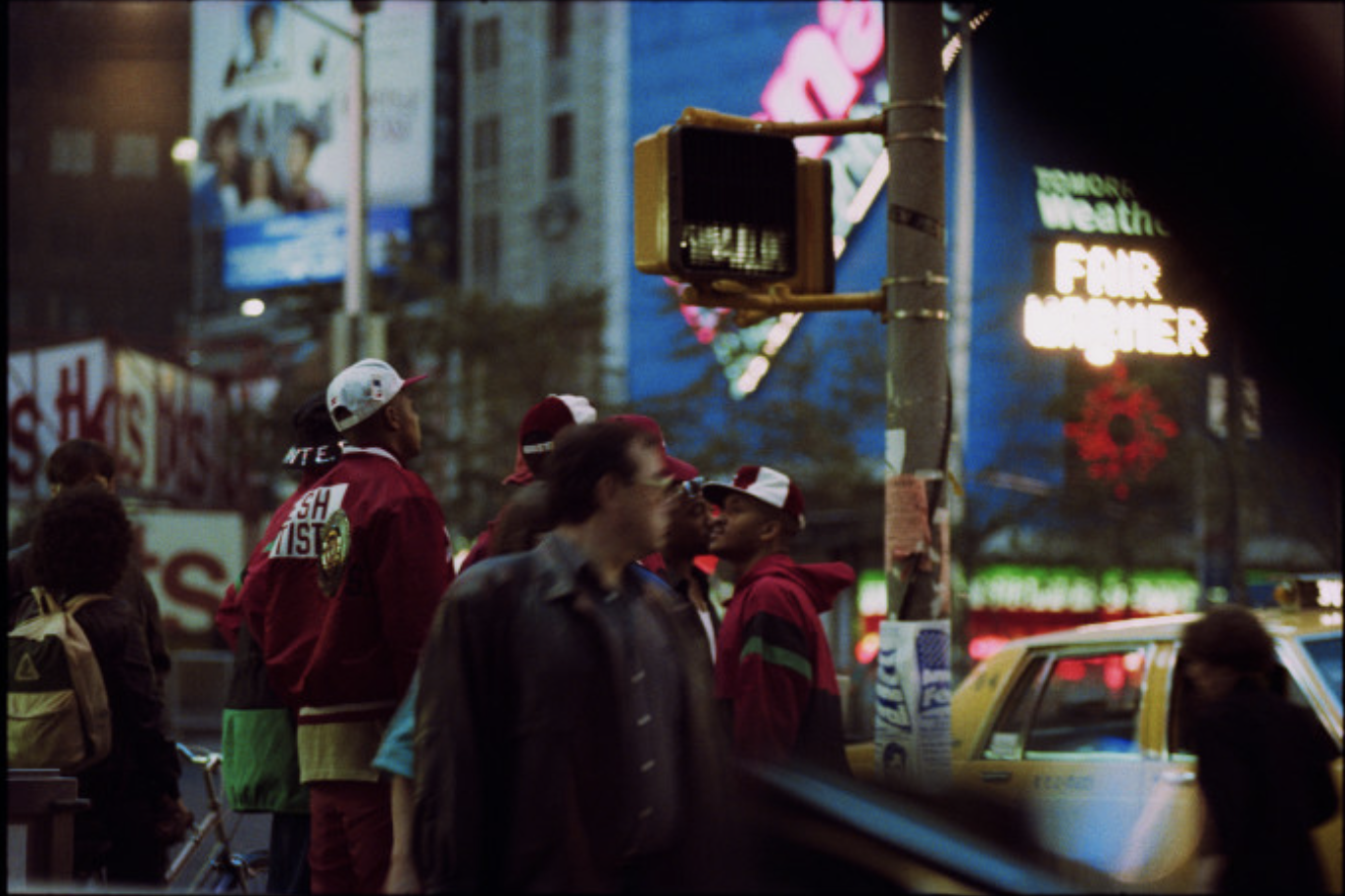
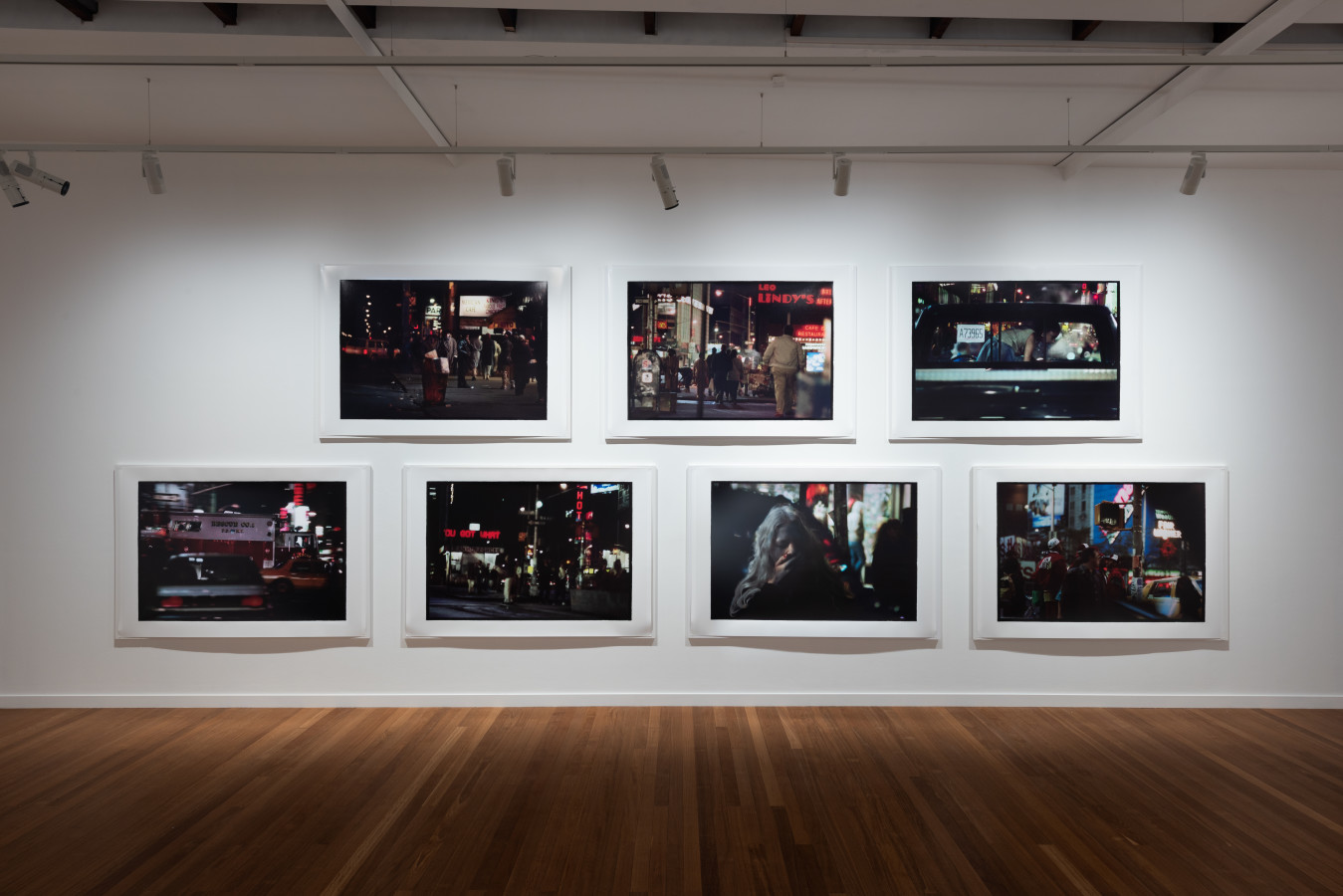
Relying on generative gaps, these landscapes result from Henson mining his archive of negatives and manipulating them to produce a finished print. Sometimes, they are composed by a principle of magnification, with Henson honing in on details, and sometimes, they are created through areas of black being expanded to make the scene more cinematic and foreboding. Like silence in a film or the pause in a pulse, the black suggests the things you can’t see.


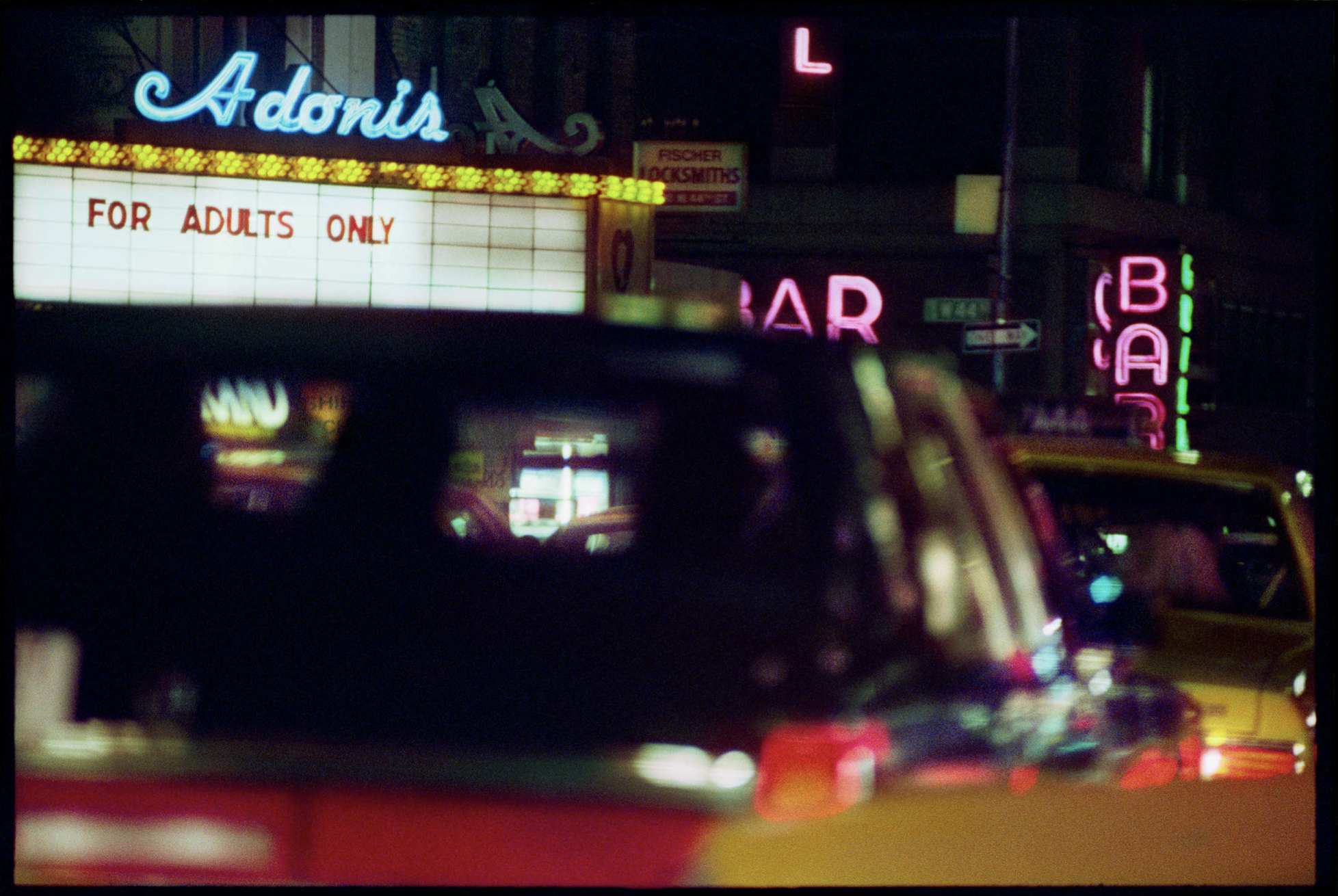
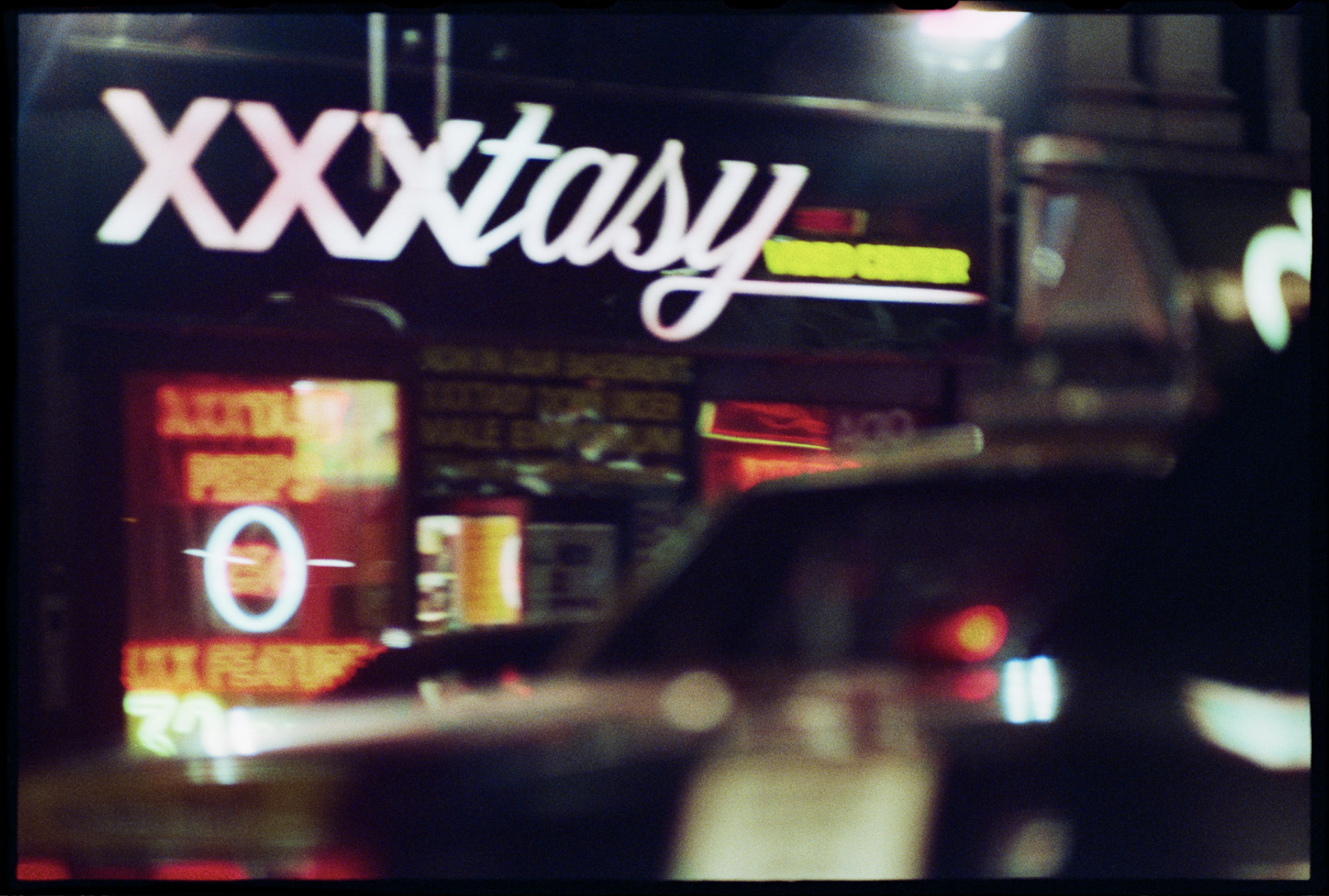
Henson’s illustrious career has spanned four decades and was memorably marred by controversy over a series of nude adolescent photographs shown in 2008, which made him front-page news for weeks. This series of portraits made Henson the subject of a police investigation during which no offence was found.
In recent years, Henson has been a sharp critic of cancel culture, encouraging artists to contribute something that will have lasting value and add to the conversation, rather than tearing down the past.
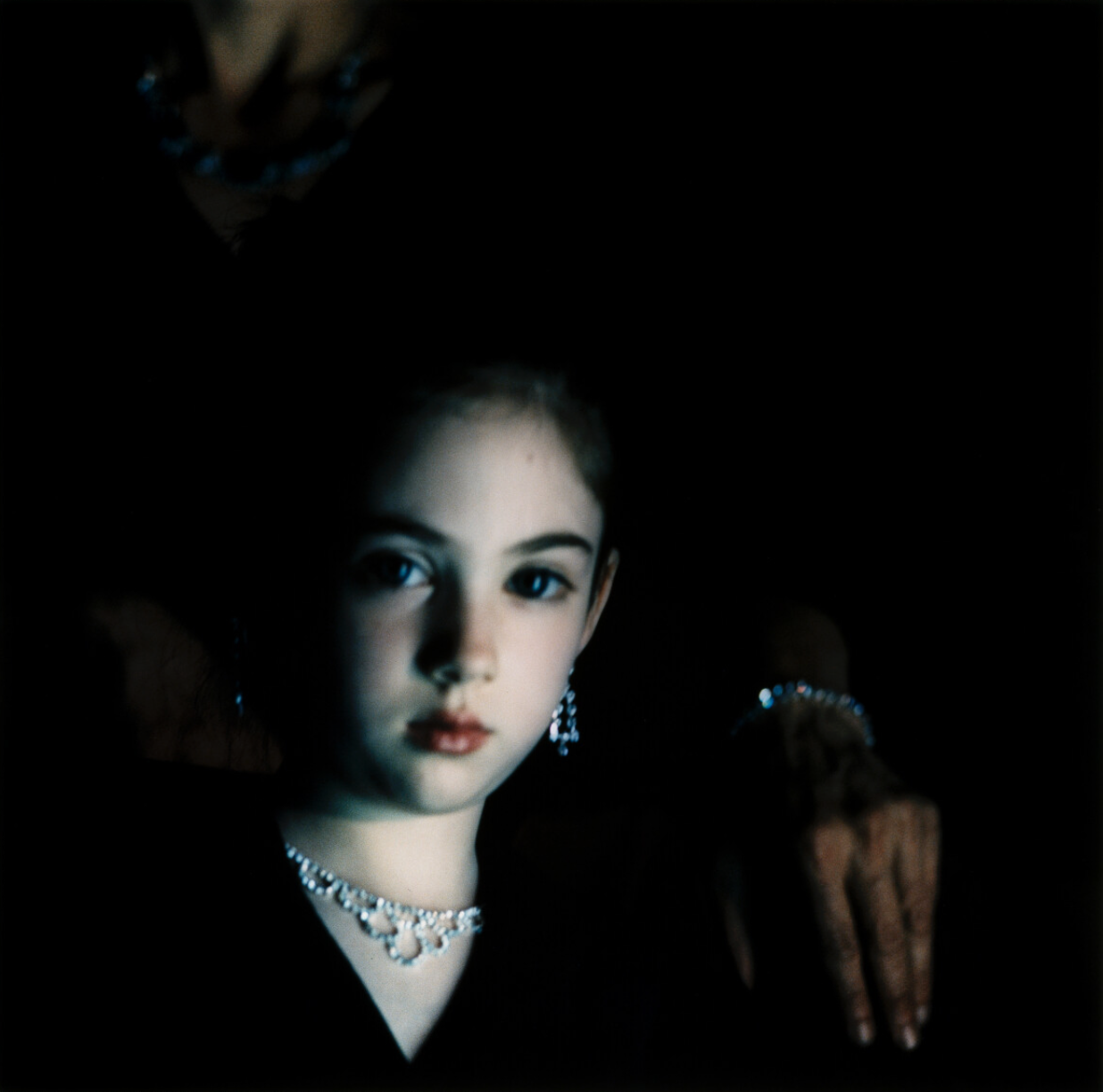
His work deals with the liminal space between the mystical and the real, the seen and unseen, the boundary between youth and adulthood.
His famous Paris Opera Project, 1990-91, pictured above, is similarly intense as the current show, dwelling on the border between the painterly and the cinematic.
Bill Henson’s ‘The Liquid Night’ runs until 11 May 2024 at Roslyn Oxley9 Gallery.
Roslyn Oxley9 Gallery, 8 Soudan Ln, Paddington NSW; roslynoxley9.com.au
You may also like.
Polar Opposites
A journey north to one of the harshest, remotest spots on Earth couldn’t be more luxurious.
A century ago, an expedition to the North Pole involved dog sleds and explorers in heavy, fur-lined clothes, windburned and famished after weeks of trudging across ice floes, finally planting their nations’ flags in the barren landscape. These days, if you’re a tourist, the only way to reach 90 degrees north latitude, the geographic North Pole, is aboard Le Commandant Charcot, a six-star hotel mated to a massive, 150-metre ice-breaking hull.
My wife, Cathy, and I are among the first group of tourists aboard Ponant’s new expedition icebreaker, the world’s only Polar Class 2–rated cruise ship (of seven levels of ice vessel, second only to research and military vessels in ability to manoeuvre in Arctic conditions). Our arrival on July 14 couldn’t be more different from explorer Robert Peary’s on April 6, 1909. On that date, he reported, he staked a small American flag—sewed by his wife—into the Pole, joined by four Inuits and his assistant, Matthew Henson, a Black explorer from Maine who was with Peary on his two previous Arctic expeditions. (Peary’s claim of being first to the Pole was quickly disputed by another American, Frederick Cook, who insisted he’d spent two days there a year earlier. Scholars now view both claims with skepticism.)
Our 300-plus party’s landing, on Bastille Day, features the captain of the French ship driving around in an all-terrain vehicle with massive wheels and an enormous tricolour flag on the back, guests dressed in stylish orange parkas celebrating on the ice, and La Marseillaise, France’s national anthem, blaring from loudspeakers. After an hour of taking selfies and building snow igloos in the icescape, with temperatures in the relatively balmy low 30s, we head back into our heated sanctuary for mulled wine and freshly baked croissants. Mission accomplished. Flags planted. Now, lunch.
As a kid, I was fascinated by stories of adventurers trying to reach the North Pole without any means of rescue. In the 19th century, most of their attempts ended in disaster—ships getting trapped in the ice, a hydrogen balloon crashing, even cannibalism. It wasn’t until Cook and Peary reportedly set foot there that the race to the North Pole was really on. Norwegian Roald Amundsen, the first to reach the South Pole, in 1911, is credited with being the first to document a trip over the North Pole, which he did in 1926 in the airship Norge. In 1977, the nuclear-powered icebreaker Arktika became the first surface vessel to make it to the North Pole. Since then, only 18 other ships have completed the voyage.
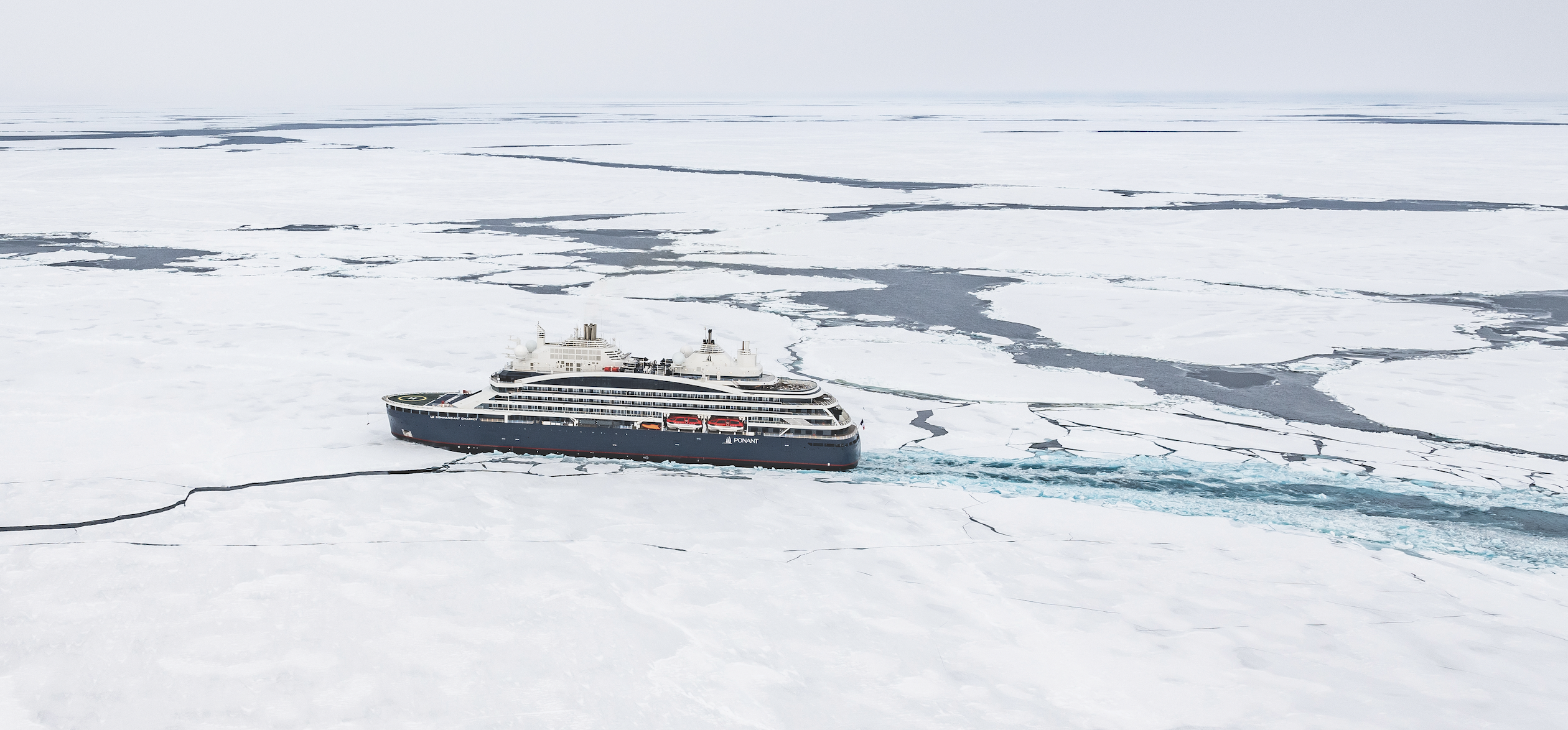
Visiting the North Pole seemed about as likely for me as walking on the Moon. It wasn’t even on my bucket list. Then came Le Commandant Charcot, which was named after France’s most beloved polar explorer and reportedly cost about US$430 million (around $655 million) to build. The irony of visiting one of the planet’s most remote and inhospitable points while travelling in the lap of luxury doesn’t escape me or anyone else I speak with on the voyage. Danie Ferreira, from Cape Town, South Africa, describes it as “an ensemble of contradictions bordering on the absurd”. Ferreira, who is on board with his wife, Suzette, is a veteran of early-explorer-style high-Arctic journeys, months-long treks involving dog sleds and real toil and suffering. He booked this trip to obtain an official North Pole stamp for an upcoming two-volume collection of his photographs, Out in the Cold, documenting his polar adventures. “Reserving the cabin felt like a betrayal of my expeditionary philosophy,” he says with a laugh.
Then, like the rest of us, he embraces the contradictions. “This is like the first time I saw the raw artistry of Cirque du Soleil,” he explains. “Everything is beyond my wildest expectations, unrelatable to anything I’ve experienced.”
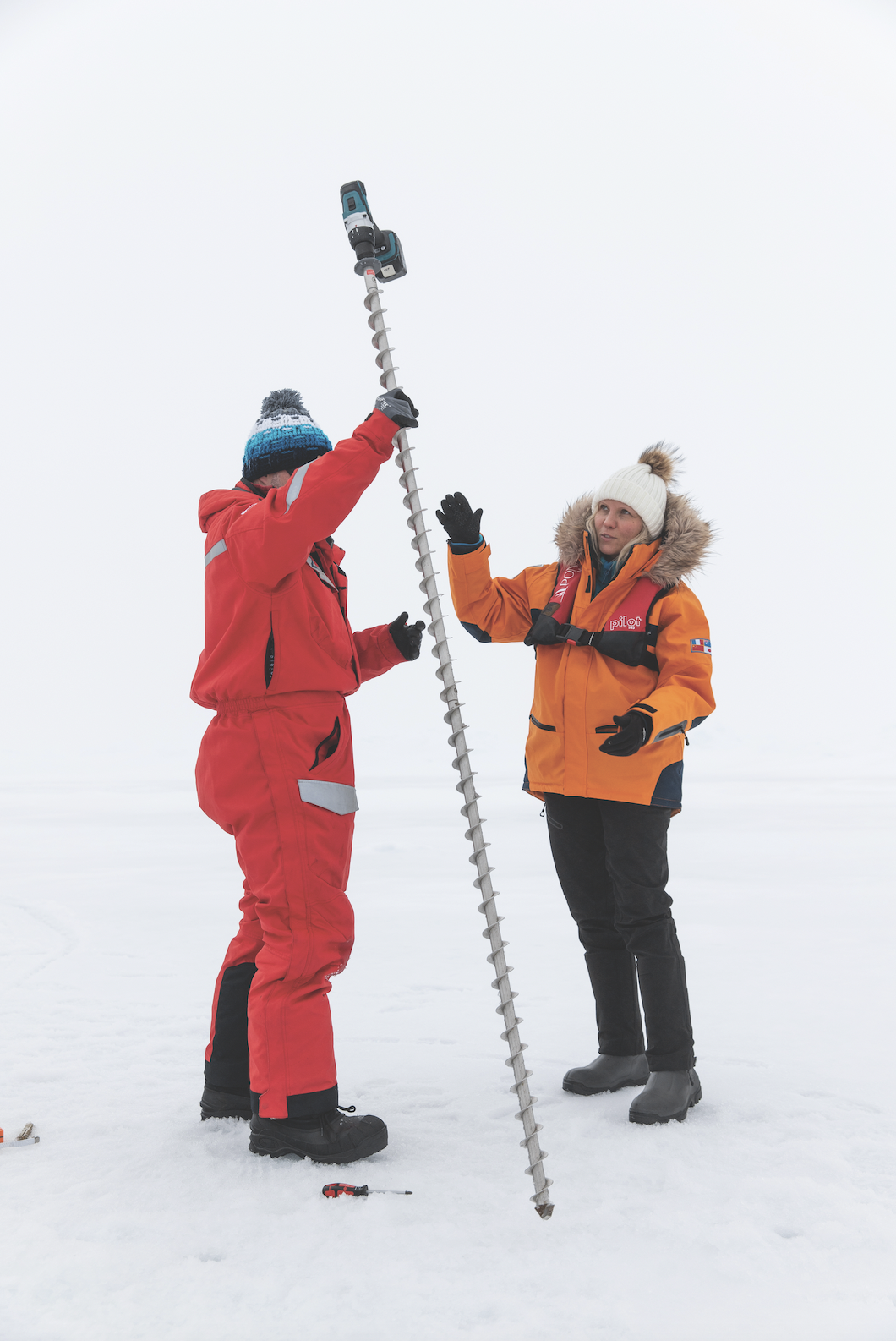
The 17-day itinerary launches from the Norwegian settlement of Longyearbyen, Svalbard, the northernmost town in the Arctic Circle, and heads 1,186 nautical miles to the North Pole, then back again. As a floating hotel, the vessel is exceptional: 123 balconied staterooms and suites, the most expensive among them duplexes with butler service (prices range from around $58,000 to $136,000 per person, double occupancy); a spa with a sauna, massage therapists, and aestheticians; a gym and heated indoor pool. The boat weighs more than 35,000 tons, enabling it to break ice floes like “a chocolate bar into little pieces, rather than slice through them”, according to Captain Patrick Marchesseau. Six-metre-wide stainless-steel propellers, he adds, were designed to “chew ice like a blender”.
Marchesseau, a tall, lanky, 40-ish mariner from Brittany, impeccable in his navy uniform but rocking royal-blue boat shoes, proves to be a charming host. Never short of a good quip, he’s one of three experienced ice captains who alternate at the helm of Charcot throughout the year. He began piloting Ponant ships through drifting ice floes in Antarctica in 2009, when he took the helm of Le Diamant, Ponant’s first expedition vessel. “An epic introduction,” Marchesseau calls those early voyages, but the isolated, icebound North Pole aboard a larger, more complicated vessel is potentially an even thornier challenge. “We’ll first sail east where the ice is less concentrated and then enter the pack at 81 degrees,” he tells a lecture hall filled with passengers on day one. “We don’t plan to stop until we get to the North Pole.”
Around us, the majority of the other 101 guests are older French couples; there are also a few extended families, some other Europeans, mostly German and Dutch, as well as 10 Americans. Among the supporting cast are six research scientists and 221 staff, including 18 naturalist guides from a variety of countries.
The first six days are more about the journey than the destination. Cathy and I settle into our comfortable stateroom, enjoy the ocean views from our balcony, make friends with other guests and naturalists, frequent the spa, and indulge in the contemporary French cuisine at Nuna, which is often jarred by ice passing under the hull, as well as at the more casual Sila (Inuit for “sky”). There are the usual cruise events: the officers’ gala, wine pairings, daily French pastries, Broadway-style shows, opera singers and concert pianists. Initially, I worry about “Groundhog Day” setting in, but once we hit patchy ice floes on day two, it’s clear that the polar party is on. The next day, we’re ensconced in the ice pack.
Veterans of Arctic journeys immediately feel at home. Ferreira, often found on the observation deck 15 metres above the ice with his long-lensed cameras, is in his element snapping different patterns and colours of the frozen landscape. “It feels like combining low-level flying with an out-of-body experience,” he says. “Whenever the hull shudders against the ice, I have a reality check.”
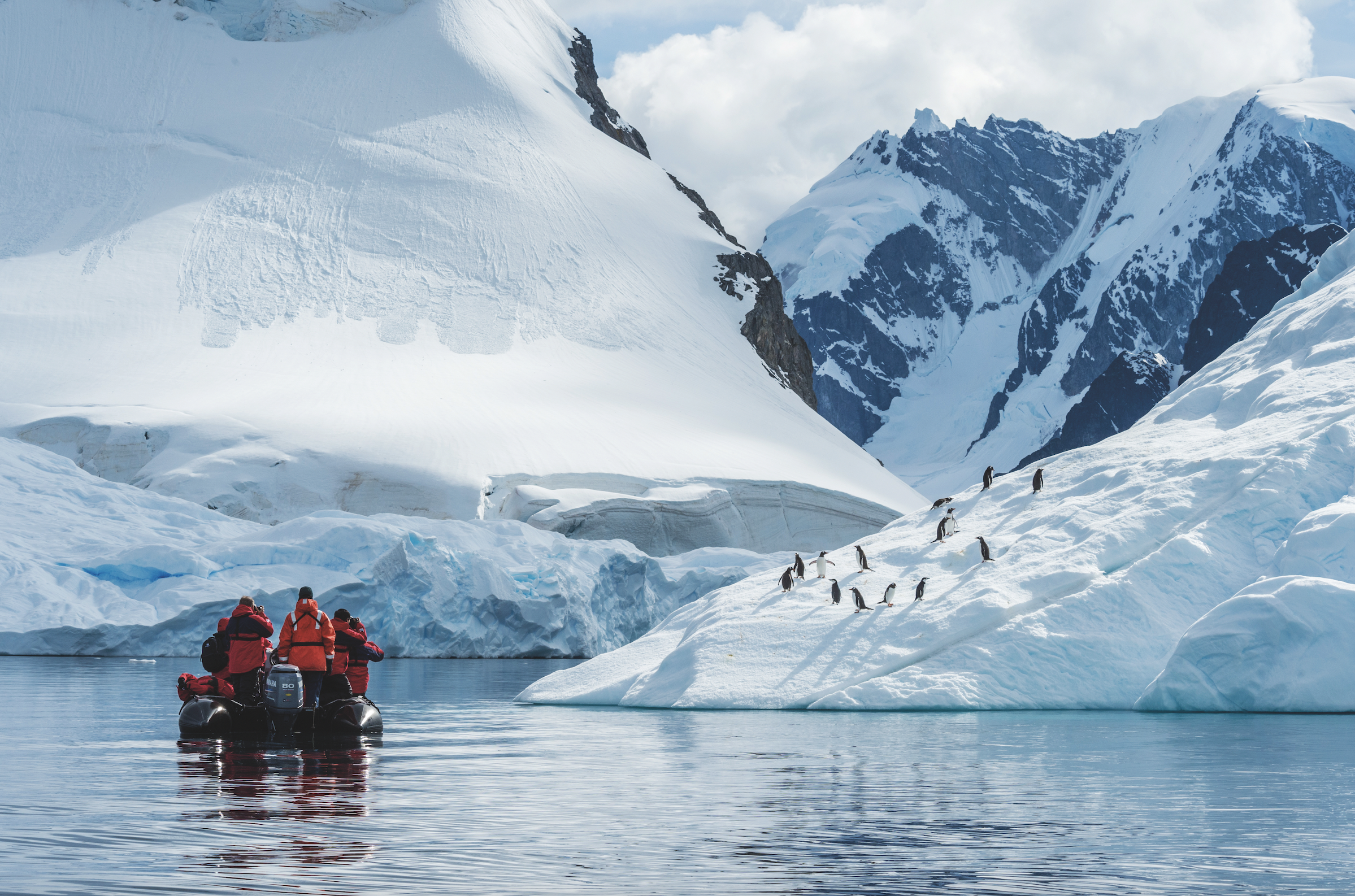
“I came back because I love this ice,” adds American Gin Millsap, who with her husband, Jim, visited the North Pole in 2015 aboard the Russian nuclear icebreaker Fifty Years of Victory, which for obvious reasons is no longer a viable option for Americans and many Europeans. “I love the peace, beauty and calmness.”
It is easy to bliss out on the endless barren vistas, constantly morphing into new shapes, contours and shades of white as the weather moves from bright sunshine to howling snowstorms—sometimes within the course of a few hours. I spend a lot of time on the cold, windswept bow, looking at the snow patterns, ridges and rivers flowing within the pale landscape as the boat crunches through the ice. It feels like being in a black-and-white movie, with no colours except the turquoise bottoms of ice blocks overturned by the boat. Beautiful, lonely, mesmerising.
Rather than a solid landmass, the Arctic ice pack is actually millions of square kilometres of ice floes, slowly pushed around by wind and currents. The size varies according to season: this past winter, the ice was at its fifth-lowest level on record, encompassing 14.6 million square kilometres, while during our cruise it was 4.7 million square kilometres, the 10th-lowest summer number on record. There are myriad ice types—young ice, pancake ice, ice cake, brash ice, fast ice—but the two that our ice pilot, Geir-Martin Leinebø, cares about are first-year ice and old ice. The thinness of the former provides the ideal route to the Pole, while the denseness of the aged variety can result in three-to-eight-metre-high ridges that are potentially impassable. Leinebø is no novice: in his day job, he’s the captain of Norway’s naval icebreaker, KV Svalbard, the first Norwegian vessel to reach the North Pole, in 2019.
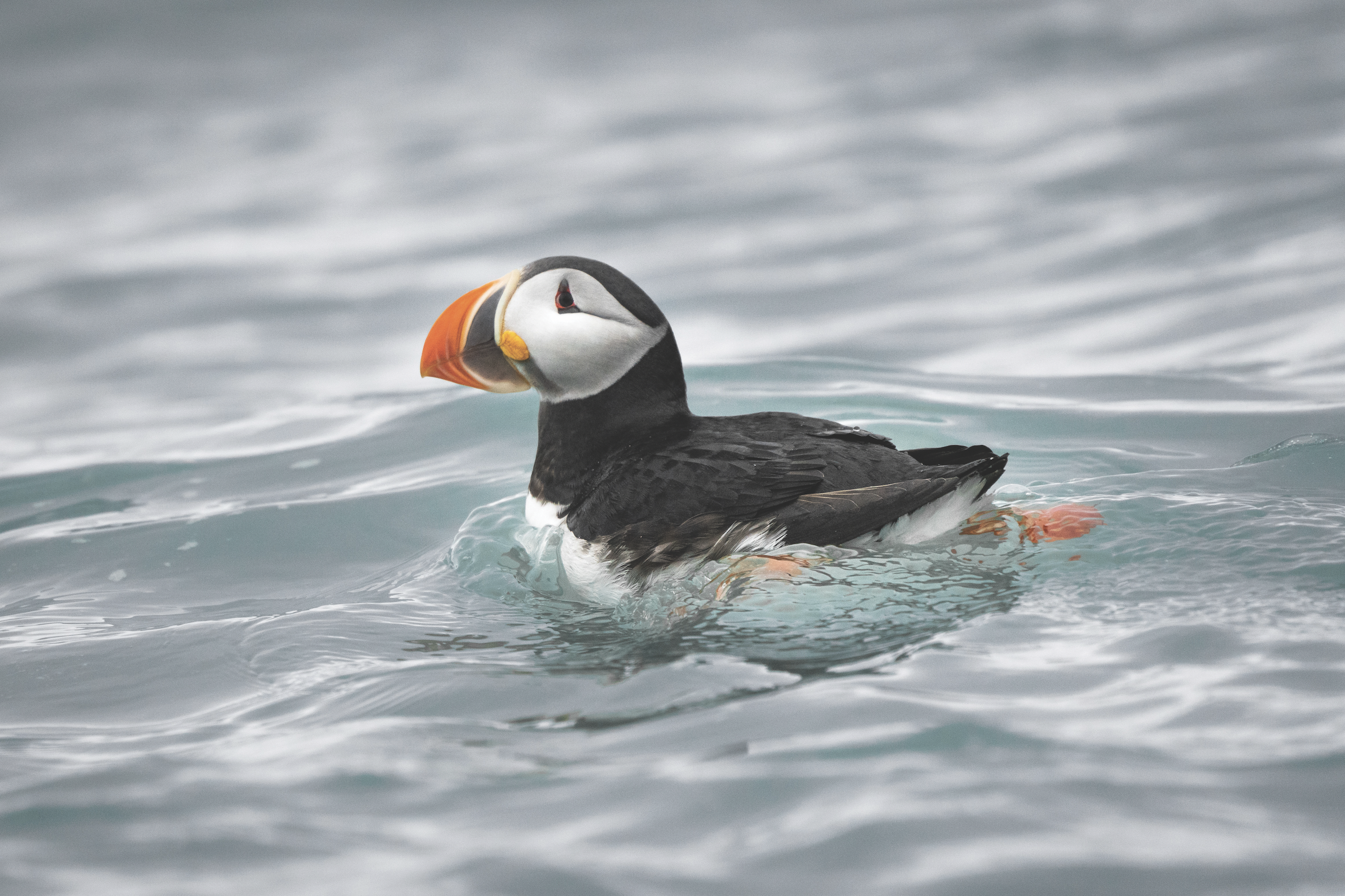
It’s not a matter of just pointing the boat due north and firing up the engine. Leinebø zigzags through the floes. A morning satellite feed and special software aid in determining the best route; the ship’s helicopter sometimes scouts 65 or so kilometres ahead, and there’s a sonar called the Sea Ice Monitoring System (SIMS). But mostly Leinebø uses his eyes. “You look for the weakest parts of the ice—you avoid the ridges because that means thickness and instead look for water,” he says. “If the ‘water sky’ in the distance is dark, it’s reflecting water like a mirror, so you head in that direction.”
Everyone on the bridge is surprised by the lack of multi-year ice, but with more than a hint of disquietude. Though we don’t have to ram our way through frozen ridges, the advance of climate change couldn’t be more apparent. Environmentalists call the Arctic ice sheet the canary in the coal mine of the planet’s climate change for good reason: it is happening here first. “It’s not right,” mutters Leinebø. “There’s just too much open water for July. Really scary.”
The Arctic ice sheet has shrunk to about half its 1985 size, and as both mariners and scientists on board note, the quality of the ice is deteriorating. “It’s happening faster than our models predicted,” says Marisol Maddox, senior arctic analyst at the Polar Institute of the Woodrow Wilson International Center for Scholars. “We’re seeing major events like Greenland’s ice sheet melting and sliding into the ocean—that wasn’t forecasted until 2070.” The consensus had been that the Arctic would be ice-free by 2050, but many scientists now expect that day to come in the 2030s.
That deterioration, it turns out, is why the three teams of scientists are on the voyage—two studying the ice and the other assessing climate change’s impact on plankton. As part of its commitment to sustainability, Ponant has designed two research labs—one wet and one dry—on a lower deck. “We took the advice of many scientists for equipping these labs,” says Hugues Decamus, Charcot’s chief engineer, clearly proud of the nearly US$12 million facilities.
The combined size of the labs, along with a sonar room, a dedicated server for the scientists, and a meteorological station on the vessel’s top deck, totals 130 square metres—space that could have been used for revenue generation. Ponant also has two staterooms reserved for scientists on each voyage and provides grants for travel expenses. The line doesn’t cherrypick researchers but instead asks the independent Arctic Research Icebreaker Consortium (ARICE) to choose participants based on submissions.
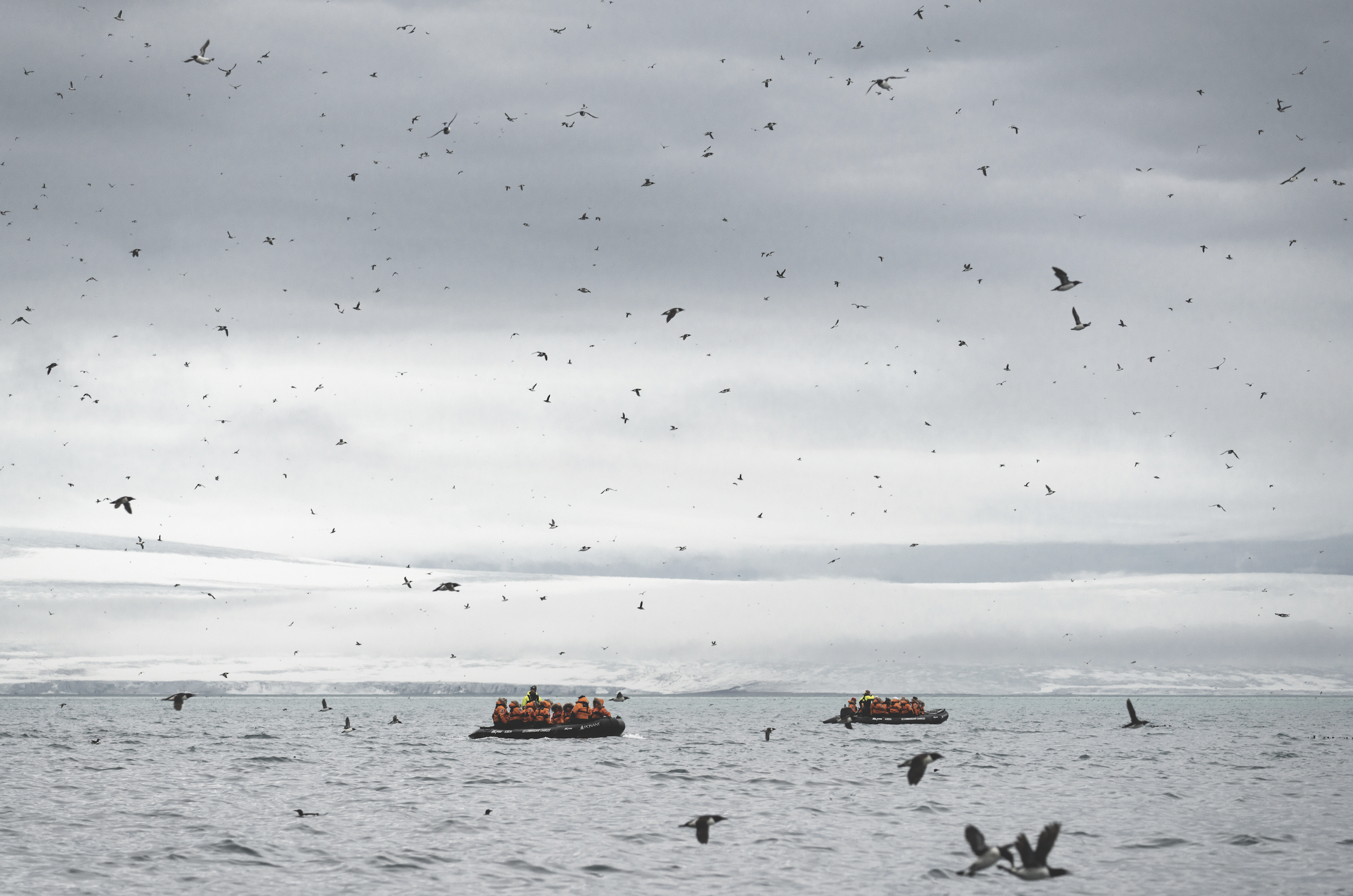
The idea, says the vessel’s science officer on this voyage, Daphné Buiron, is to make the process transparent and minimise the appearance of greenwashing. “Yes, this alliance may deliver a positive public image for the company, but this ship shows we do real science on board,” she says. The labs will improve over time, adds Decamus, as the ship amasses more sophisticated equipment.
Research scientists and tourist vessels don’t typically mix. The former, wary of becoming mascots for the cruise lines’ sustainability marketing efforts, and cognisant of the less-than-pristine footprint of many vessels, tend to be wary. The cruise lines, for their part, see scientists as potentially high maintenance when paying customers should be the priority. But there seemed to be a meeting of the minds, or at least a détente, on Le Commandant Charcot.
“We discuss this a lot and are aware of the downsides, but also the positives,” says Franz von Bock und Polach, head of the institute for ship structural design and analysis at Hamburg University of Technology, specialising in the physics of sea ice. Not only does Charcot grant free access to these remote areas, but the ship will also collect data on the same route multiple times a year with equipment his team leaves on board, offering what scientists prize most: repeatability. “One transit doesn’t have much value,” he says. “But when you measure different seasons, regions and years, you build up a more complex picture.” So, more than just a research paper: forecasts of ice conditions for long-term planning by governments as the Arctic transforms.
Nils Haëntjens, from the University of Maine, is analysing five-millilitre drops of water on a high-tech McLane IFCB microscope. “The instrument captures more than 250,000 images of phytoplankton along the latitudinal transect,” he says. Charcot has doors in the wet lab that allow the scientists to take water samples, and in the bow, inlets take in water without contaminating it. Two freezers can preserve samples for further research back in university labs.
Even though the boat won’t stop, the captain and chief engineer clearly want to make the science missions work. Marchesseau dispatches the helicopter with the researchers and their gear 100 kilometres ahead, where they take core samples and measurements. I spot them in their red snowsuits, pulling sleds on an ice floe, as the boat passes. Startled to see living-colour humans on the ice after days of monochrome, I feel a pang of jealousy as I head for a caviar tasting.
The only other humans we encounter on the journey north are aboard Fifty Years of Victory, the Russian icebreaker. The 160-metre orange- and-black leviathan reached the North Pole a day earlier—its 59th visit—and is on its way back to Murmansk. It’s a classic East meets West moment: the icebreaker, launched just after the collapse of the Soviet Union, meeting the new standard of polar luxury.
The evening before Bastille Day, Le Commandant Charcot arrives at the North Pole. Because of the pinpoint precision of the GPS, Marchesseau has to navigate back and forth for about 20 minutes—with a bridge full of passengers hushing each other so as not to distract him—until he finds 90 degrees north. That final chaotic approach to the top of the world in the grey, windswept landscape looks like a kid’s Etch A Sketch on the chartplotter, but it is met with rousing cheers. The next morning, with good visibility and light winds, we spill out onto the ice for the celebration, followed by a polar plunge.
As guests pose in front of flags and mile markers for major cities, the naturalist guides, armed with rifles, establish a wide perimeter to guard against polar bears. The fearless creatures are highly intelligent, with razor-sharp teeth, hooked claws and the ability to sprint at 40 km/h. Males average about three metres tall and weigh around 700 kilos. They are loners that will kill anything—including other bears and even their own cubs. Cathy and I walk around the far edges of the perimeter to enjoy some solitude. Looking out over the white landscape, I know this is a milestone. But it feels odd that getting here didn’t involve any sweat or even a modicum of discomfort.
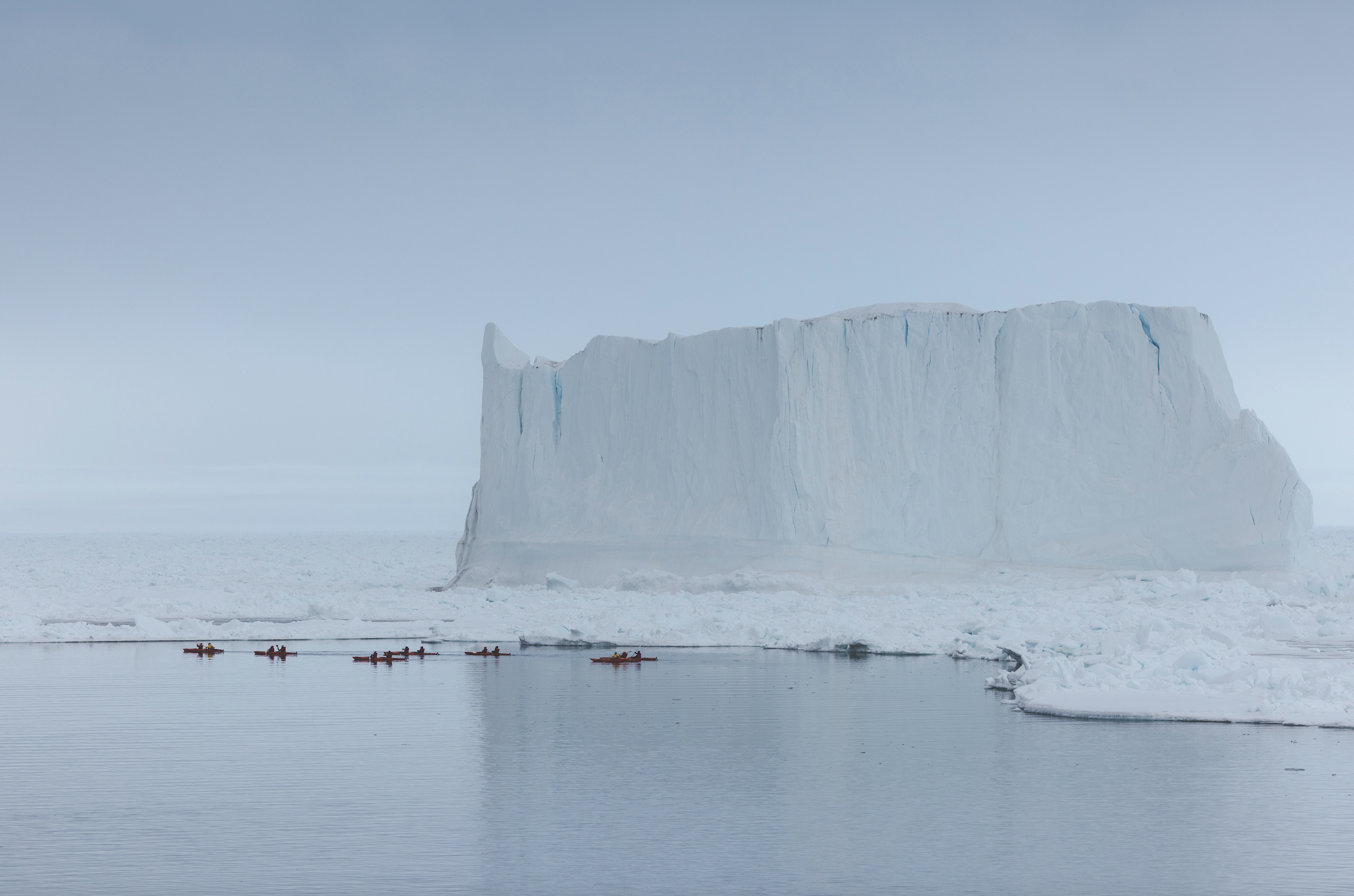
The rest of the week is an entirely different trip. On the return south, we see a huge male polar bear ambling on the ice, looking over his shoulder at us. It is our first sighting of the Arctic’s apex predator, and everyone crowds the observation lounge with long-lensed cameras. The next day, we see another male, this one smaller, running away from the ship. “They have many personalities,” says Steiner Aksnes, head of the expedition team, who has led scientists and film crews in the Arctic for 25 years. We see a dozen on the return to Svalbard, where 3,000 are scattered across the archipelago, outnumbering human residents.
The last five days we make six stops on different islands, travelling by Zodiac from Charcot to various beaches. On Lomfjorden, as we look on a hundred yards from shore, a mother polar bear protects her two cubs while a young male hovers in the background. On a Zodiac ride off Alkefjellet, the air is alive with birds, including tens of thousands of Brünnich’s guillemots as well as glaucous gulls and kittiwakes, which nest in that island’s cliffs, while a young male polar bear munches on a ring seal, chin glistening red.
On this part of the trip, the expedition team, mostly 30-something, free-spirited scientists whose areas of expertise range from botany to alpine trekking to whales, lead hikes across different landscapes. The jam-packed schedule sometimes involves three activities per day and includes following the reindeer on Palanderbukta, seeing a colony of 200 walruses on Kapp Lee, hiking the black tundra of Burgerbukta (boasting 3.8-cm-tall willows—said to be the smallest trees in the world and the largest on Svalbard—plus mosquitoes!), watching multiple species of whales breaching offshore, and kayaking the ice floes of Ekmanfjorden. Svalbard is a protected wilderness area, and the cruise lines tailor their schedules so vessels don’t overlap, giving visitors the impression they are setting foot on virgin land.
Chances to experience that sense of discovery and wonder, even slightly stage-managed ones, are dwindling along with the ice sheet and endangered wildlife. If a stunning trip to a frozen North Pole is on your bucket list, the time to go is now.
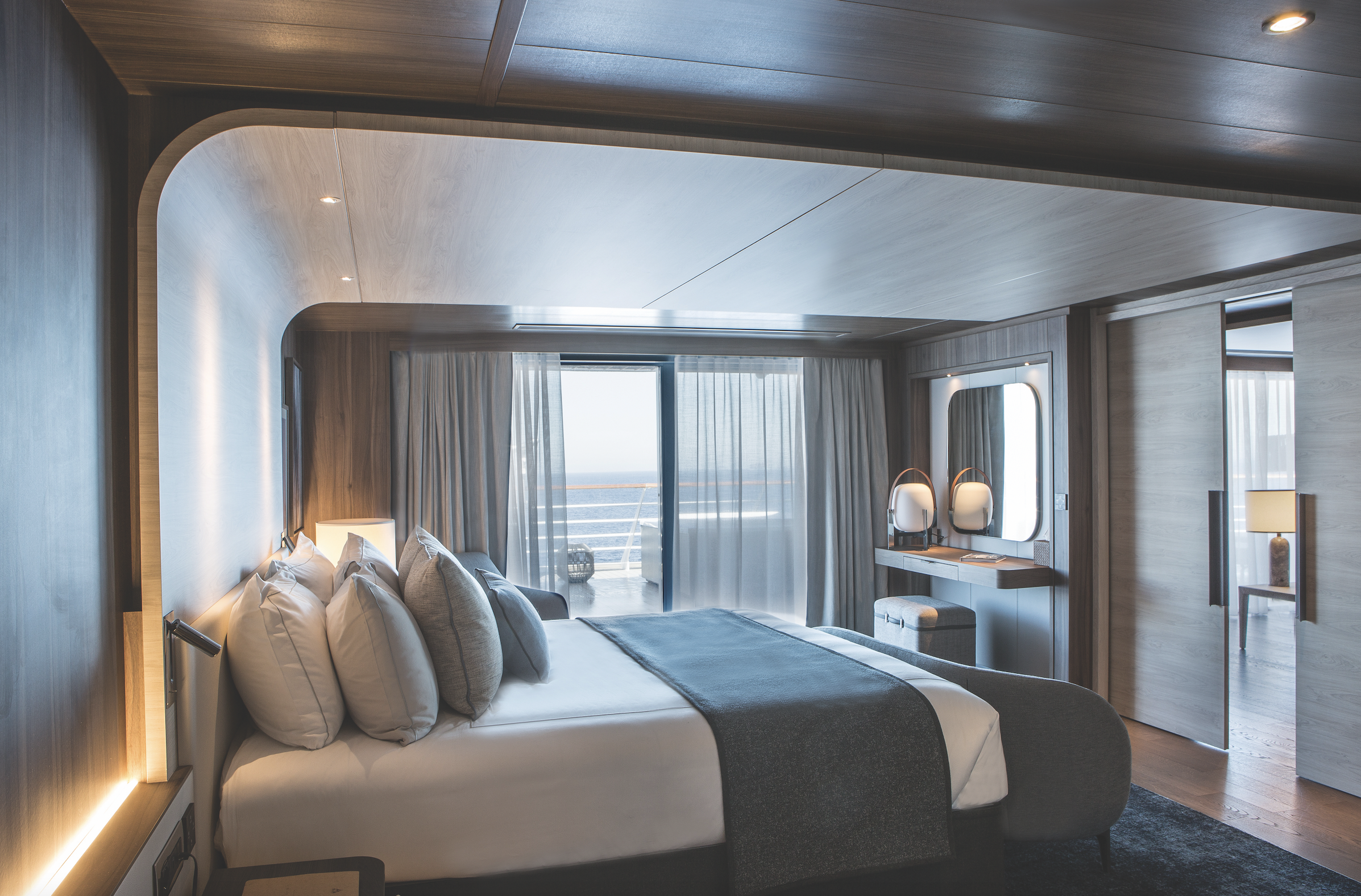
PARADIGM SHIP
For those studying polar ice, a berth aboard Le Commandant Charcot is like a winning lottery ticket. “This cruise ship is one of the few resources scientists can use, because nothing else can get there,” says G. Mark Miller, CEO of research-vessel builder Greenwater Marine Sciences Offshore (GMSO) and a former ship captain for the US National Oceanic and Atmospheric Administration (NOAA). “Then factor in 80 percent of scientists who want to go to sea, can’t, because of the shortage of research vessels.”
Both Ponant and Viking have designed research labs aboard new expedition vessels as part of their sustainability initiatives. “Remote areas like Antarctica need more data—the typical research is just single data points,” says Damon Stanwell-Smith, Ph.D., head of science and sustainability at Viking. “Every scientist says more information is needed.” The twin sisterships Viking Octantis and Viking Polaris, which travel to Antarctica, Patagonia, the Great Lakes and Canada, have identical 35-square-metre labs, separated into wet and dry areas and fitted out with research equipment. In hangars below are military-grade rigid-hulled inflatables and two six-person yellow submersibles (the pair on Octantis are named John and Paul, while Polaris’s are George and Ringo). Unlike Ponant, Viking doesn’t have an independent association choose scientists for each voyage. Instead, it partners with the University of Cambridge, the Cornell Lab of Ornithology, and NOAA, which send their researchers to work with Viking’s onboard science officers.
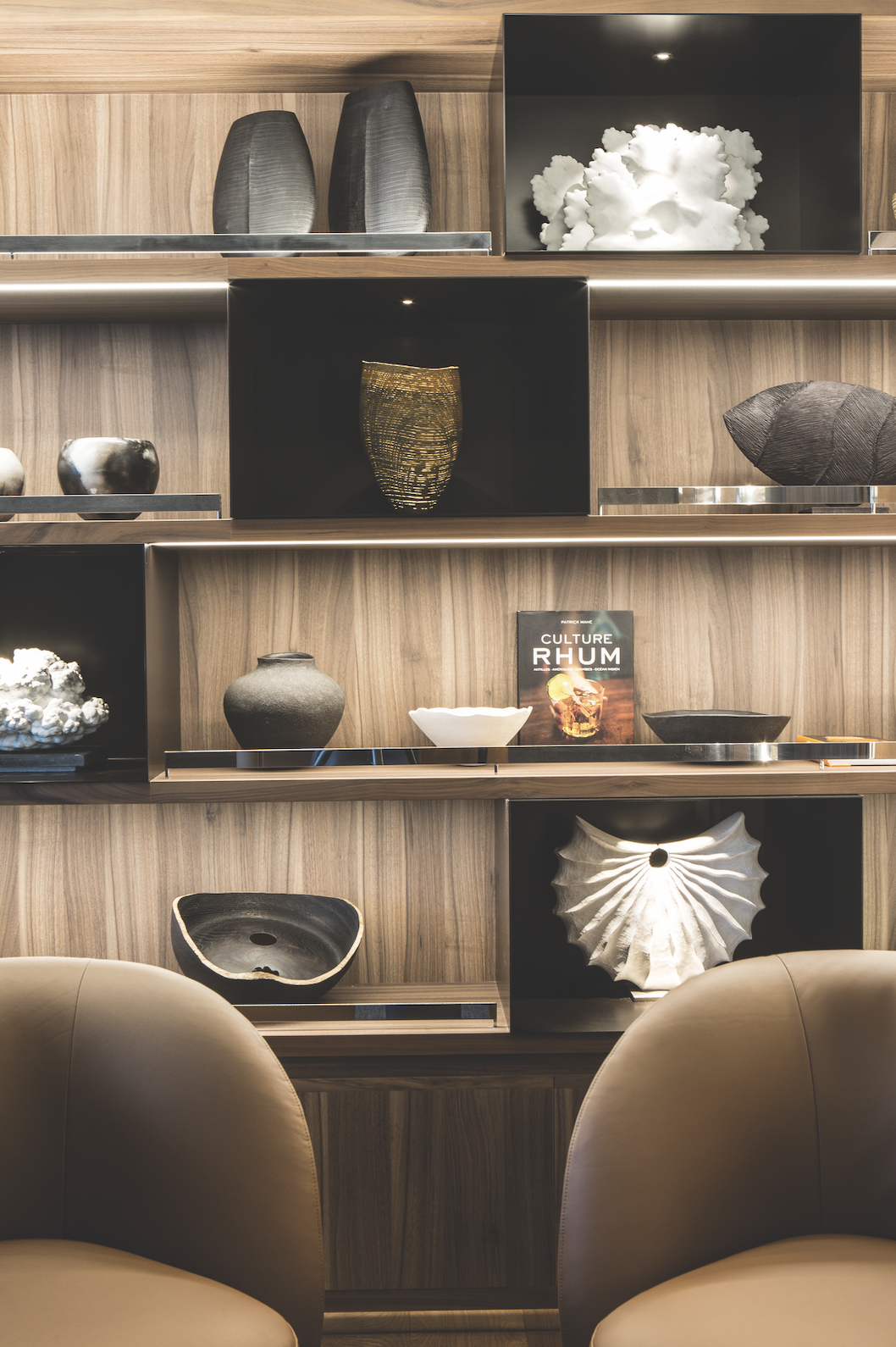
“Some people think marine research is sticking some kids on a ship to take measurements,” says Stanwell-Smith. “But we know we can do first-rate science—not spin.” Other cruise lines are also embracing sustainability initiatives, with coral-reef-restoration projects and water-quality measurements, usually in partnership with universities. Just about every vessel has “citizen-scientist” research programs allowing guests the opportunity to count birds or pick up discarded plastic on beaches. So far, Ponant and Viking are the only lines with serious research labs. Ponant is adding science officers to other vessels in its fleet. As part of the initiatives, scientists deliver onboard lectures and sometimes invite passengers to assist in their research.
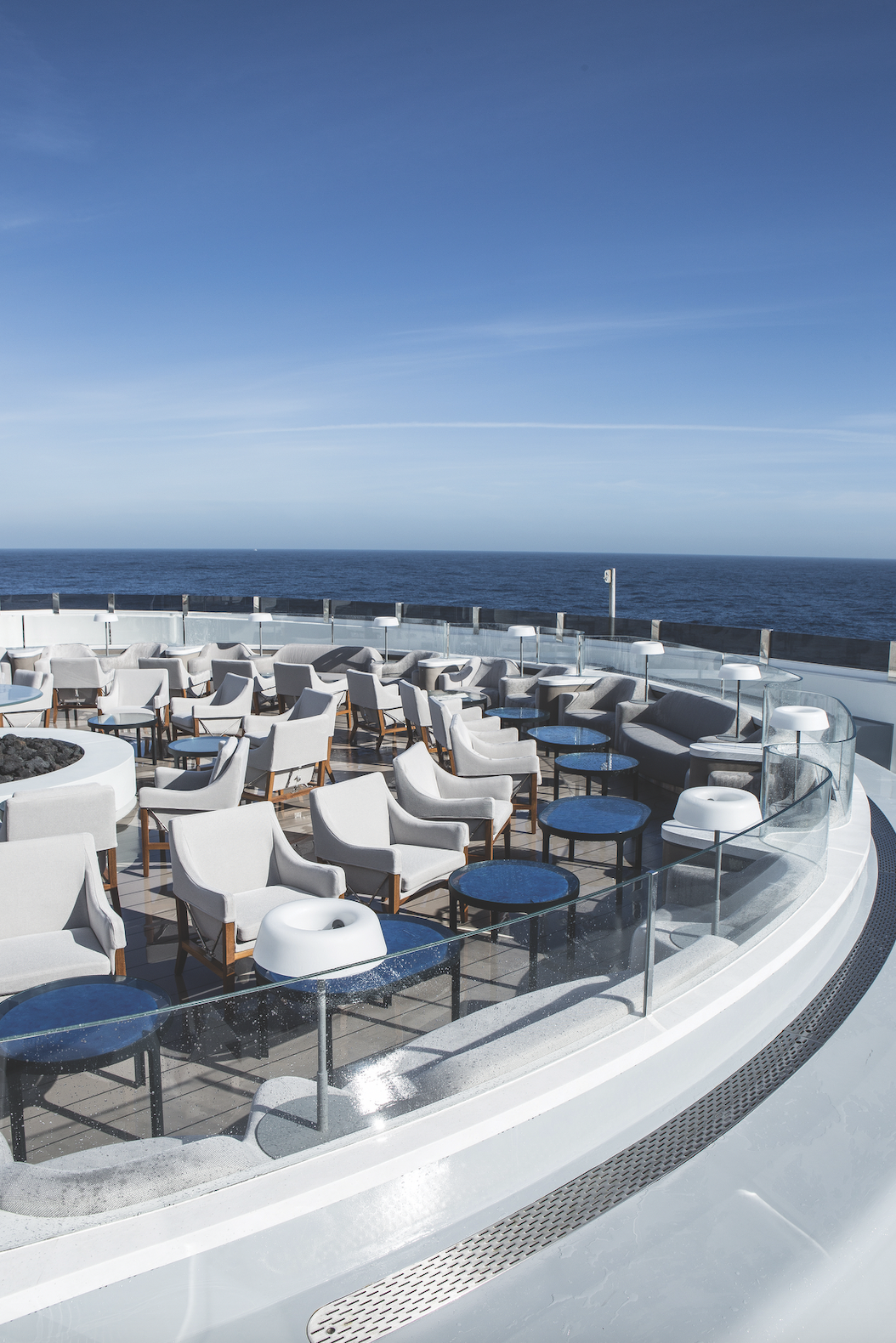
Given the shortage of research vessels, Stanwell-Smith thinks this passenger-funded system will coexist nicely with current NGO- and government-owned ships. “This could be a new paradigm for exploring the sea,” he says. “Maybe the next generation of research vessels will look like ours.”
You may also like.
Watch of the Week: the Piaget Altiplano Ultimate Concept Tourbillon
The new release claims the throne as the world’s thinnest Tourbillon.
Piaget, the watchmaker’s watchmaker, has once again redefined the meaning of “ultra-thin” thanks to its newest masterpiece, the Altiplano Ultimate Concept Tourbillon—the world’s thinnest tourbillon watch.
In the world of high-watchmaking where thin is never thin enough—look at the ongoing battle between Piaget, Bulgari, and Richard Mille for the honours—Piaget caused a furore at Watches & Wonders in Geneva when it unveiled its latest feat to coincide with the Maison’s 150th year anniversary.
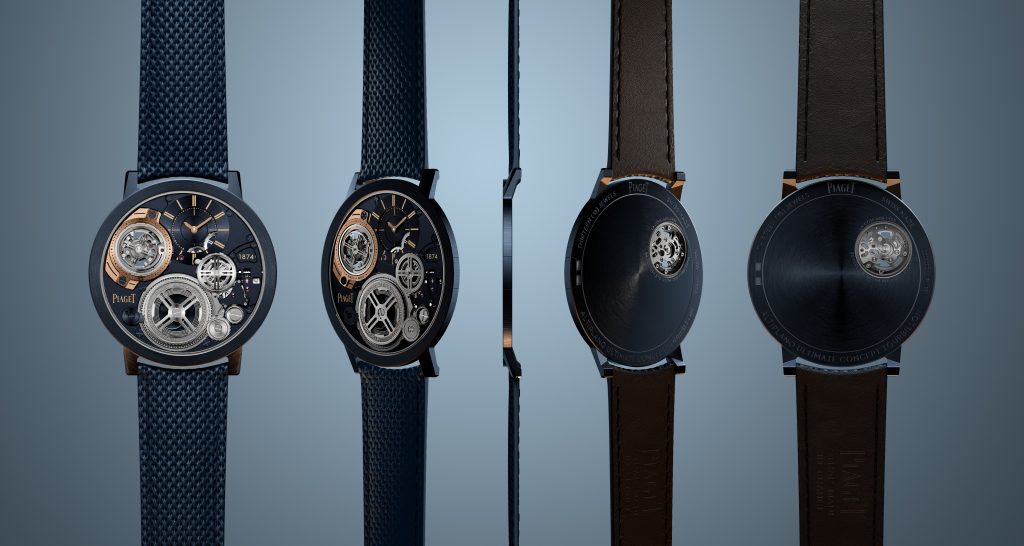
Piaget claims that the new Altiplano is “shaped by a quest for elegance and driven by inventiveness”, and while this might be true, it’s clear that the Maison’s high-watchmaking divisions in La Côte-aux-Fées and Geneva are also looking to end the conversation around who owns the ultra-thin watchmaking category.
The new Altiplano pushes the boundaries of horological ingenuity 67 years after Piaget invented its first ultra-thin calibre—the revered 9P—and six years after it presented the world’s then-thinnest watch, the Altiplano Ultimate Concept. Now, with the release of this unrivalled timepiece at just 2mm thick—the same as its predecessor, yet now housing the beat of a flying tourbillon, prized by watchmaking connoisseurs—you can’t help but marvel at its ultra-thin mastery, whether the timepiece is to your liking or not.
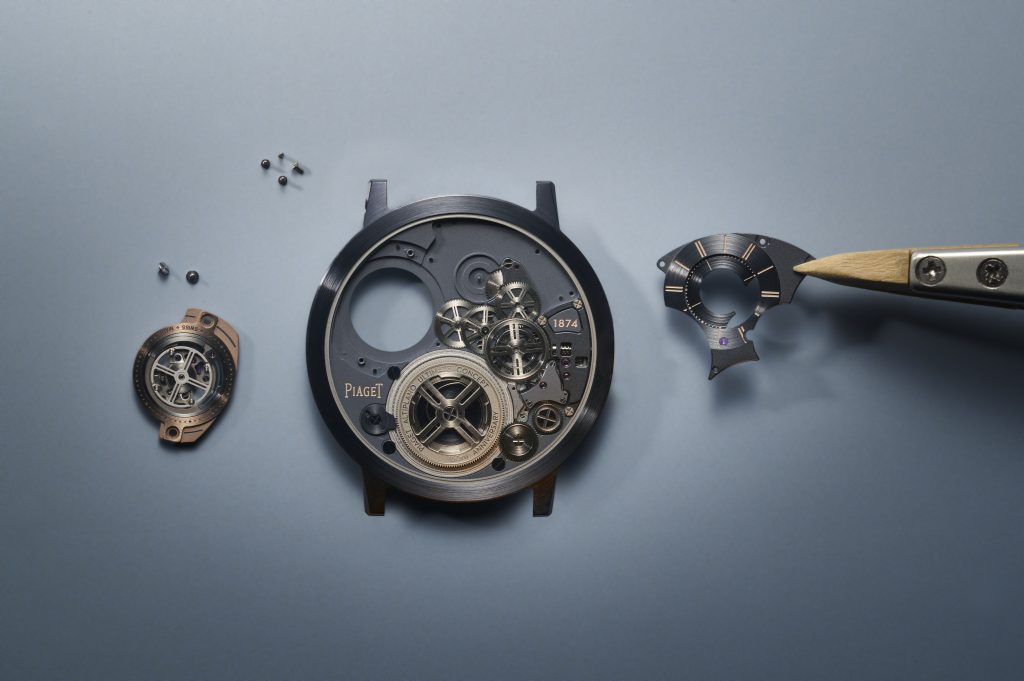
In comparison, the Bulgari Octo Finissimo Tourbillon was 3.95mm thick when unveiled in 2020, which seems huge on paper compared to what Piaget has been able to produce. But to craft a watch as thin and groundbreaking as its predecessor, now with an added flying tourbillon complication, the whole watchmaking process had to be revalued and reinvented.
“We did far more than merely add a tourbillon,” says Benjamin Comar, Piaget CEO. “We reinvented everything.”
After three years of R&D, trial and error—and a redesign of 90 percent of the original Altiplano Ultimate Concept components—the 2024 version needs to be held and seen to be believed. The end product certainly isn’t a watch for the everyday watch wearer—although Piaget will tell you otherwise—but in many ways, the company didn’t conjure a timepiece like the Altiplano as a profit-seeking exercise. Instead, overcoming such an arduous and technical watchmaking feat proves that Piaget can master the flying tourbillon in such a whimsical fashion and, in the process, subvert the current state-of-the-art technical principles by making an impactful visual—and technical—statement.
The only question left to ask is, what’s next, Piaget?
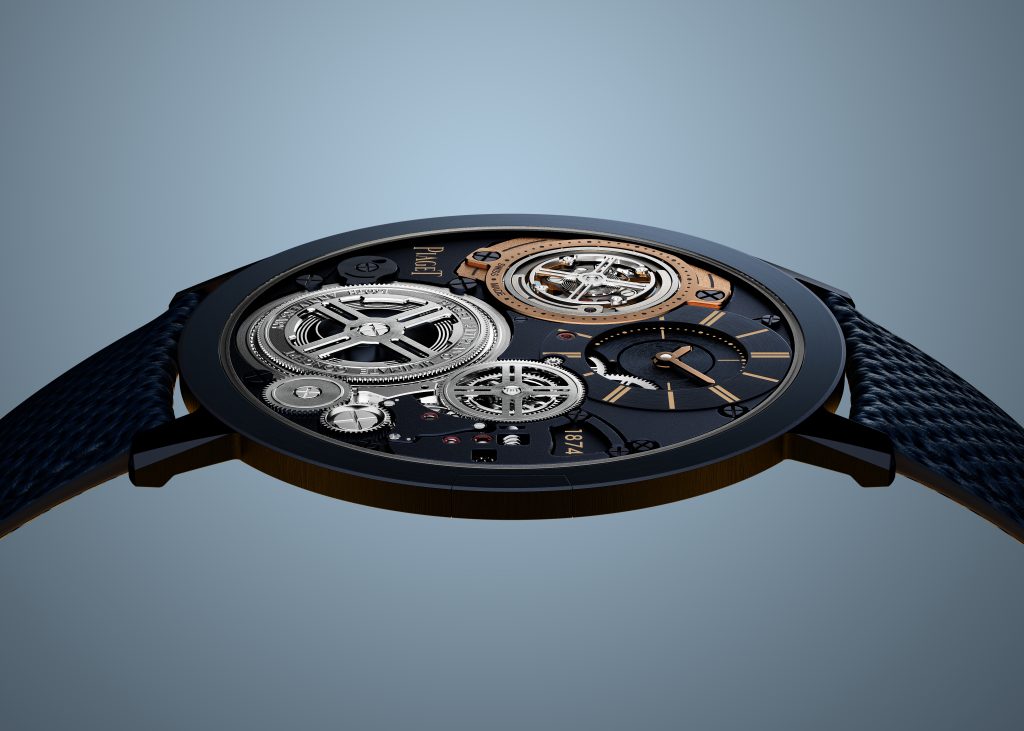
—
Model: Altiplano Ultimate Concept Tourbillon 150th Anniversary
Diameter: 41.5 mm
Thickness: 2 mm (crystal included)
Material: M64BC cobalt alloy, blue PVD -treated
Dial: Monobloc dial; polished round and baton indices, Bâton-shaped hand for the minutes Monobloc disc with a hand for the hours
Water resistance: 20m
Movement: Calibre 970P-UC, one-minute peripheral tourbillon
Winding: Hand-wound
Functions: hours, minutes, and small seconds (time-only)
Power reserve: 40 hours
Availability: Limited production, not numbered
Price: Price on request







